The Library of Congress
So I just have to get all fan-girl here because the Library of Congress is so amazing. I’ve been there several times, but today we got to go behind the scenes and really experience some of the library’s coolest places. I have a ton of other blog posts that I meant to write first, but I had to get this one out. This is one of those DC Days (TM) that was part of a DC Week (TM) as an Einstein Fellow. Amazing!
First a bit of an overview. We started the day learning about using primary sources with students as phenomena to spark their interest. Then we toured the rare book room, the preservation lab, ate lunch, went to the Science and Technology Reading room and toured the stacks, and then had a short tour of the Jefferson Building. Then some of us went into THE main reading room, which up to now I’ve just viewed from the above gallery. All you need is your library card—so amazing!
Some information about the actual library—the library has three buildings around the Capitol, the Jefferson, Madison, and Adams building. The more ornate and elaborate one that most people visit is the Jefferson Building. The other two buildings house collections, BOOKS, various reading rooms, etc. The Madison Building, incidentally, has a great cafeteria where random House members eat… I saw Adam Schiff there today, NBD. The Capitol, House and Senate office buildings, and the library buildings are all connected via underground tunnels. In addition to the three main buildings, the Library of Congress has many warehouses and buildings in Maryland and Virginia to house their massive collections of at least 150 million items.
Also, educators, check out all of the LOC’s teacher resources here. So many cool things, including collections of items that are already curated for specific events/topics. Not just books, but pictures, engravings, and much more.
Here are a few to whet your interest:
I believe I have already established that I am a HUGE history buff and, in particular, are fascinated by the civil war. Here’s a collection of amazing resources about the lead up to the Civil War from 1850-1861.
Oh man, another one… I can’t help it… here’s one of Civil War Portraits.
Ok, science! Changing models of the solar system, here.
And finally, Scientific Data: observing, recording, and communicating information here.
So, bear with me, I took a ton of photos and most of the information is going to be found in the captions, so click through and read about our adventure today! Slide Show today… because there are just too many images. To see the captions, hover over the image as you scroll through.
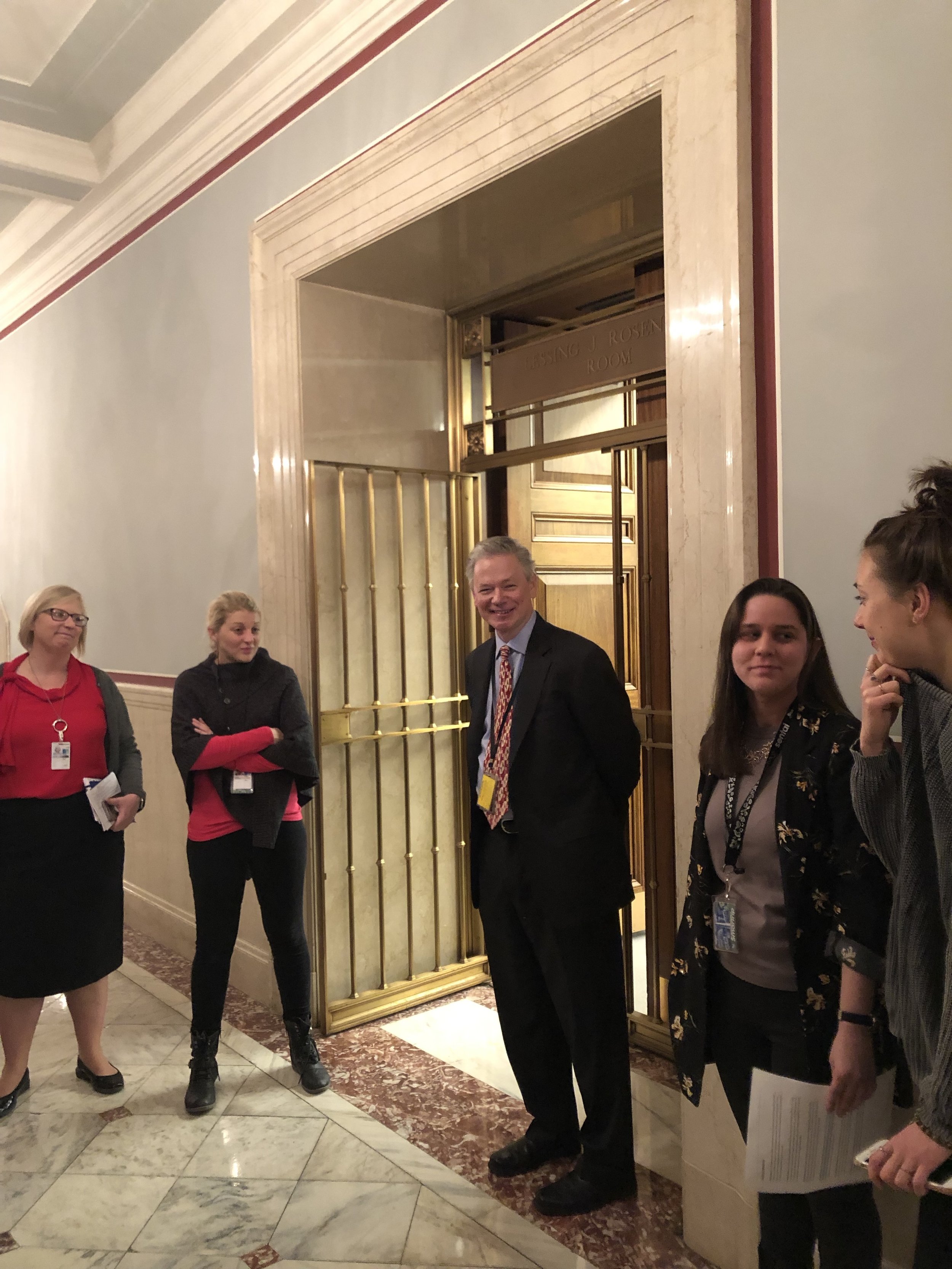
Waiting to enter the book mecca…
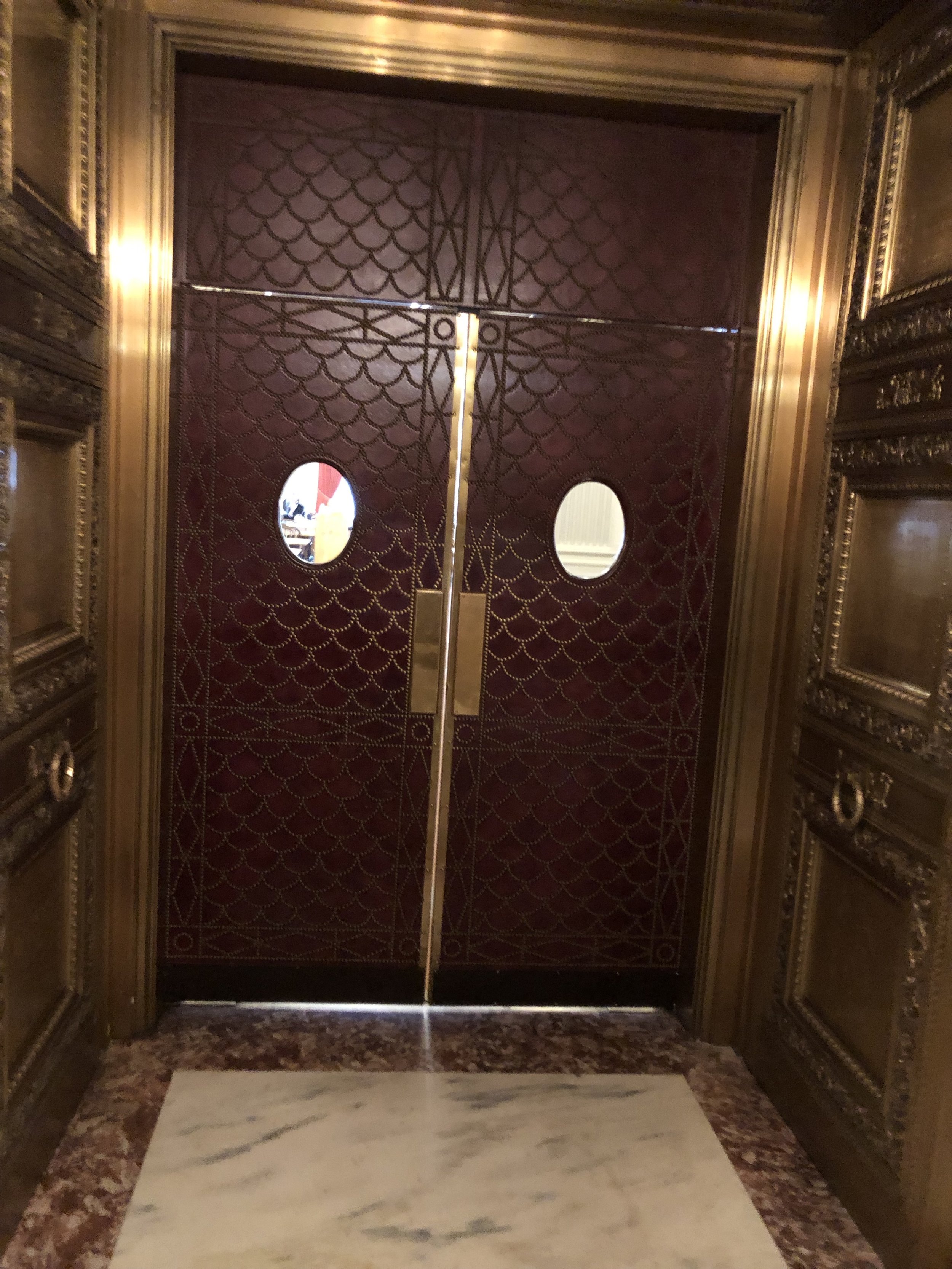
If you are approved to view one of the library’s rare books, you get to enter these amazing doors and peruse your chosen tome. Supervised by caring librarians, of course.
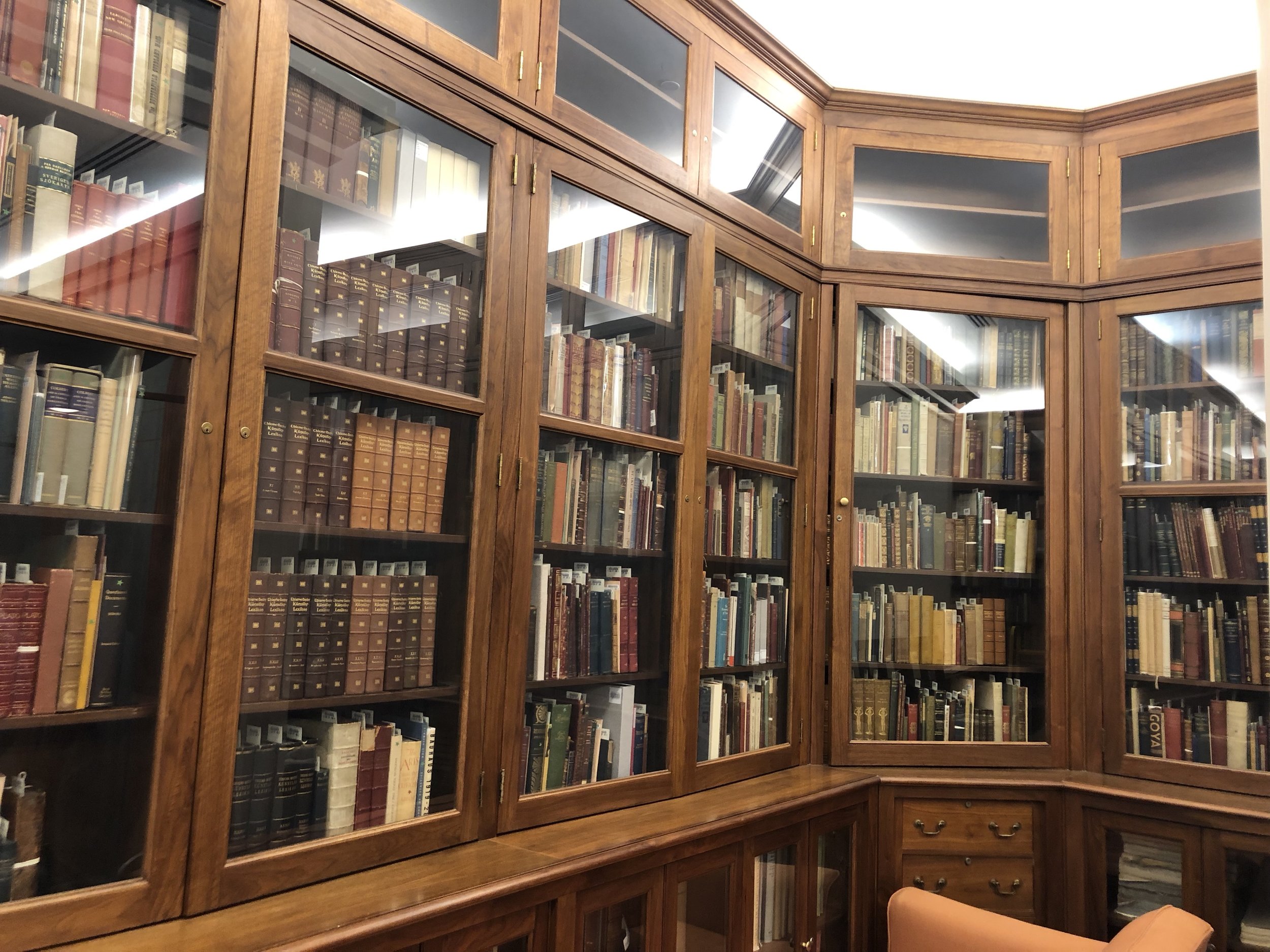
Some of the books in the rare book room. They are mostly kept under specific humidity and temperature regimes.
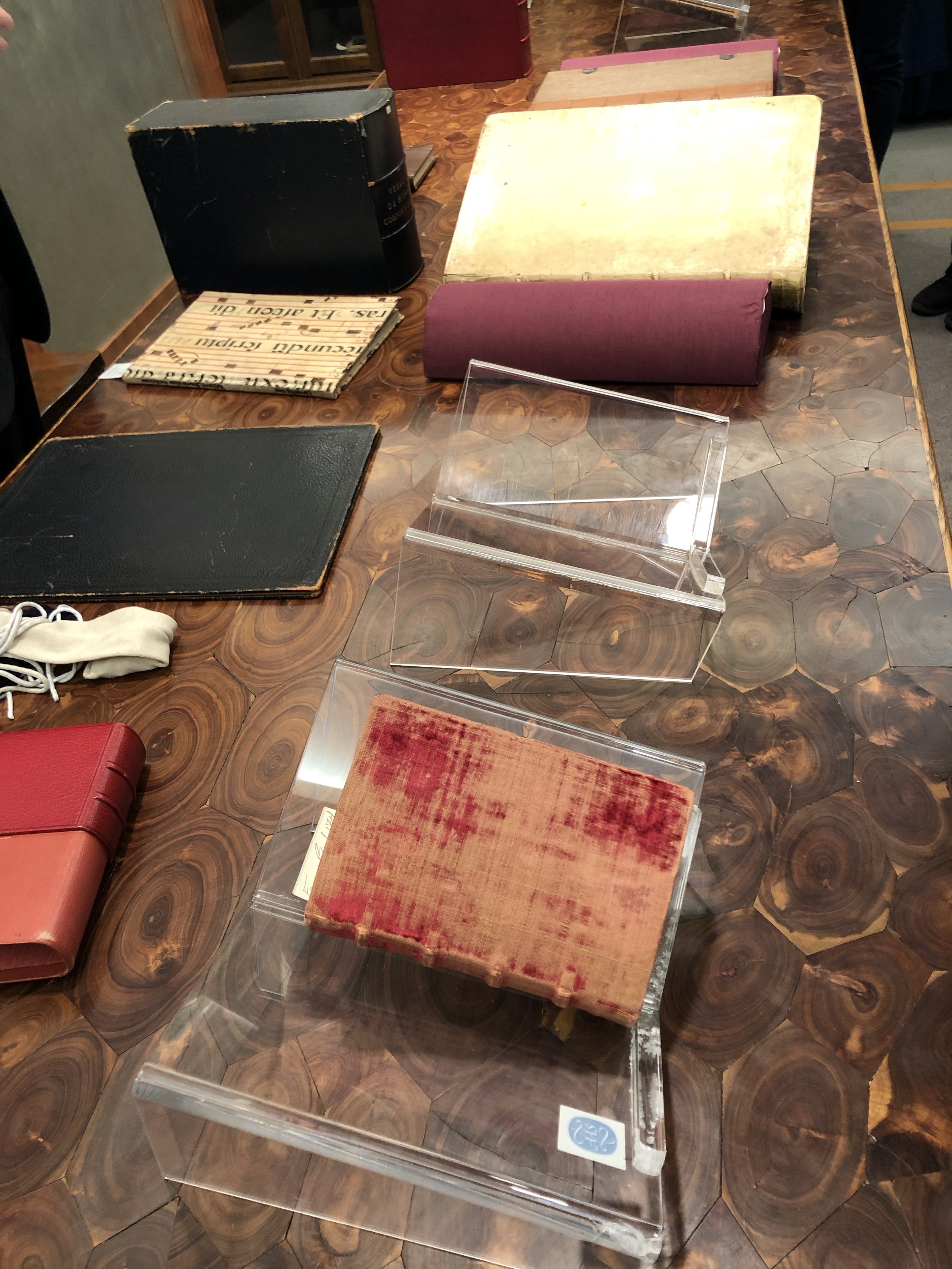
Some of the rare books that were pulled out for our visit!
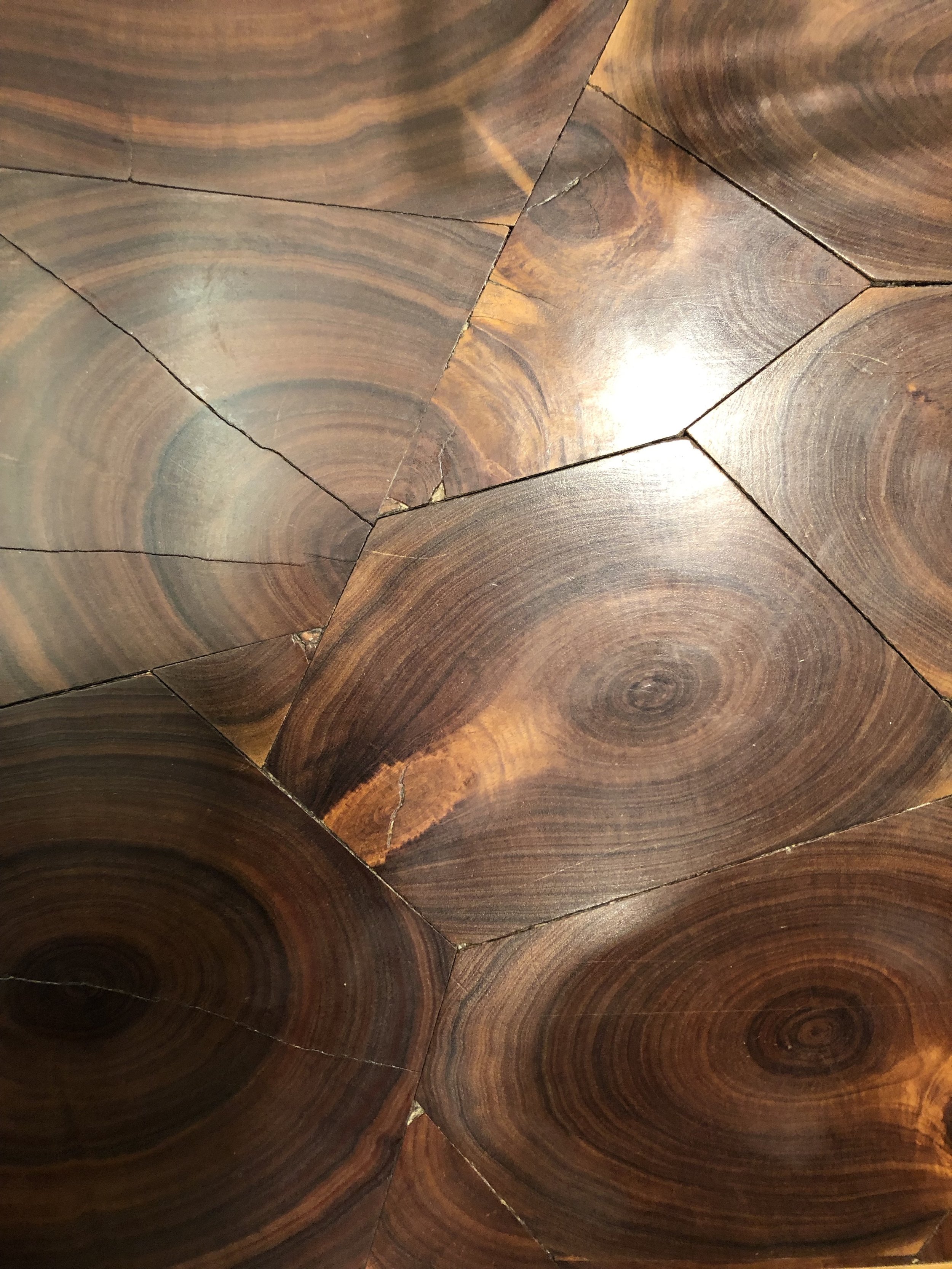
Look at this table! I can’t remember where the table that the rare books were resting on came from, but it was so beautifully made of individual small tree cores…
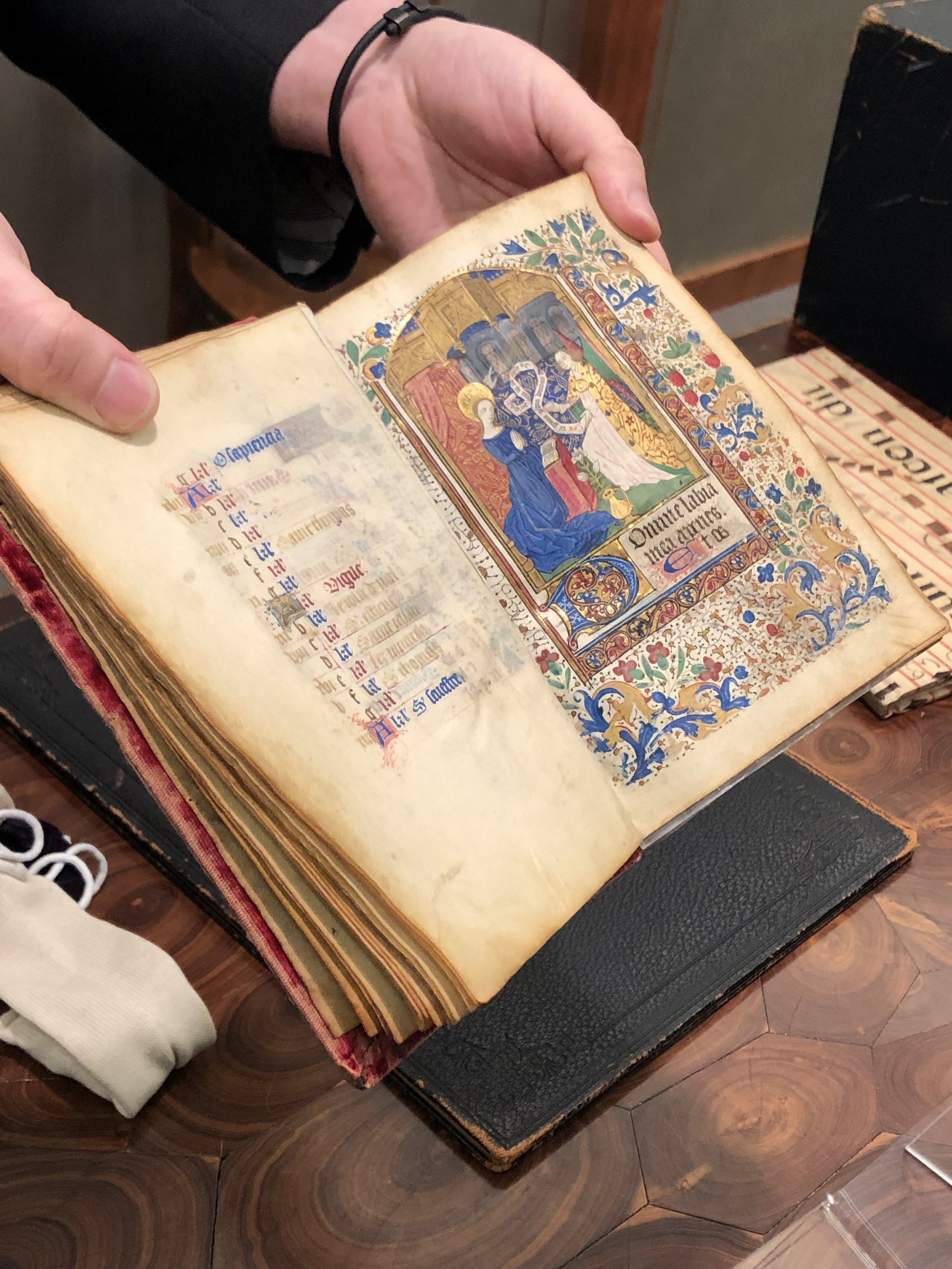
Hand copied and painted on vellum (calf skin), this was a book used in the 1400’s(!) to help organize prayer time.
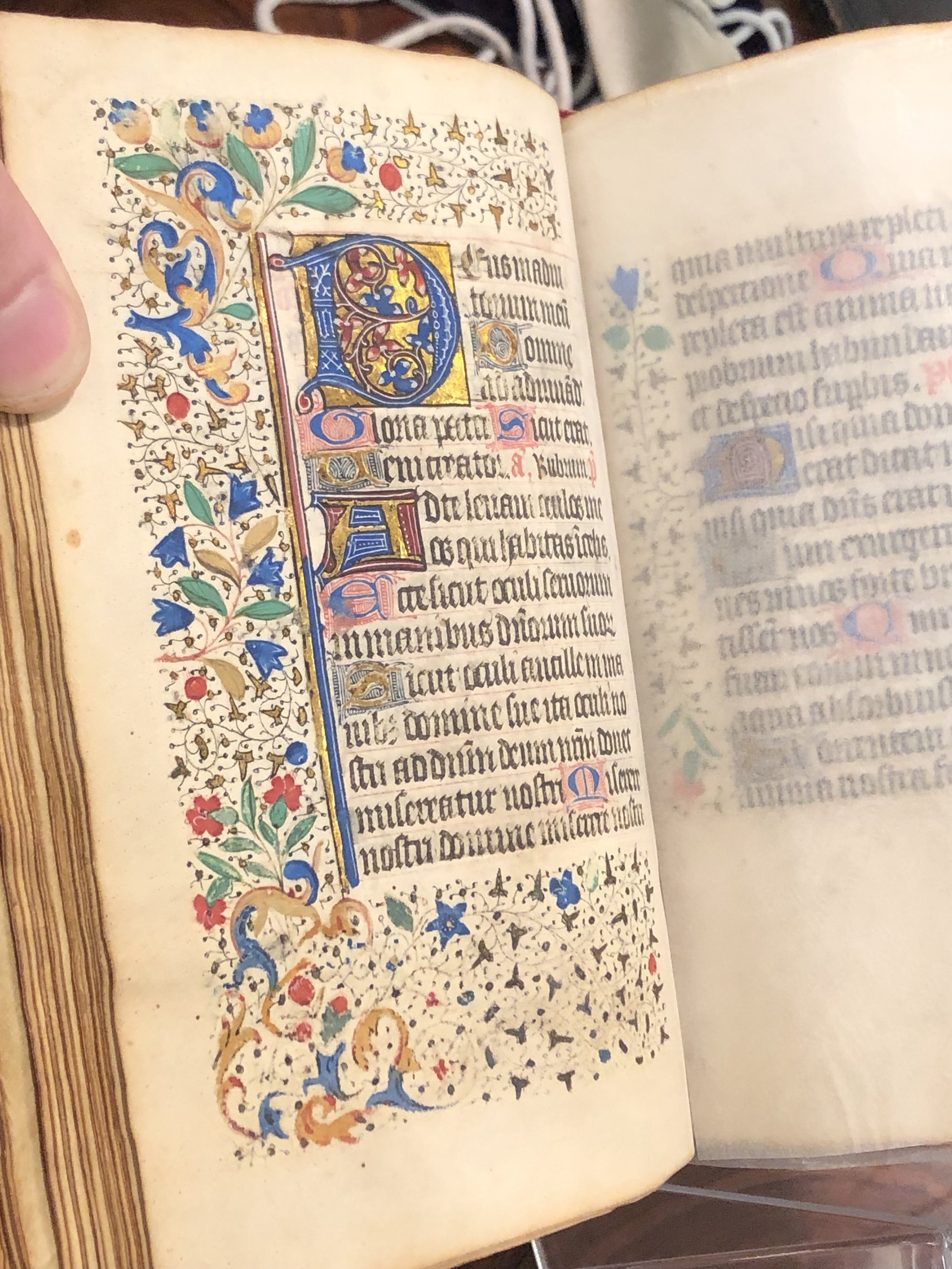
Another page of the book with an elaborate capital. How beautiful is this?
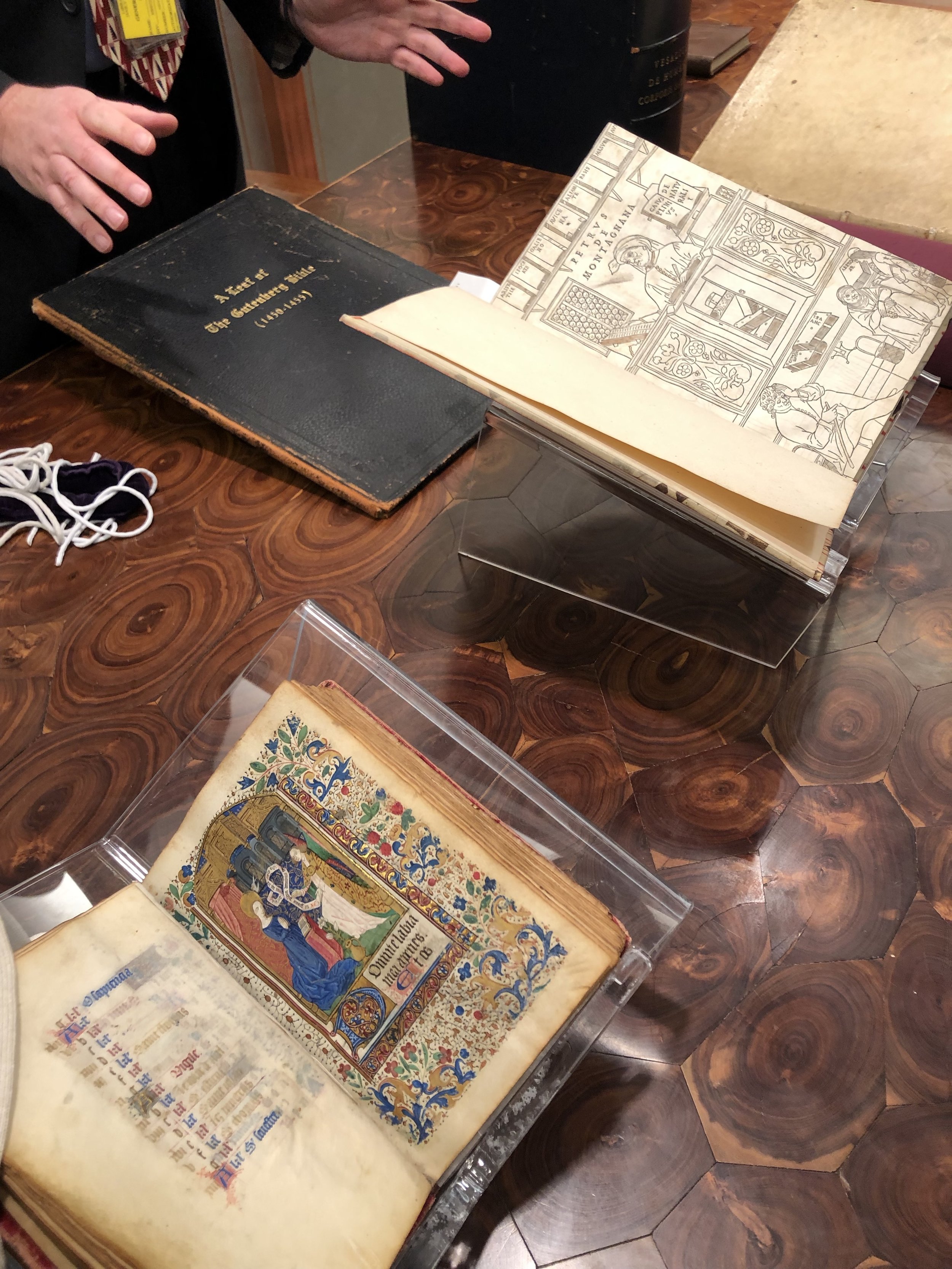
After the book of hours, we looked at a leaf from a Guttenburg Bible that had been chopped into individual pages (insert Munch “The Scream” face here), and then one of the first printed medical texts.
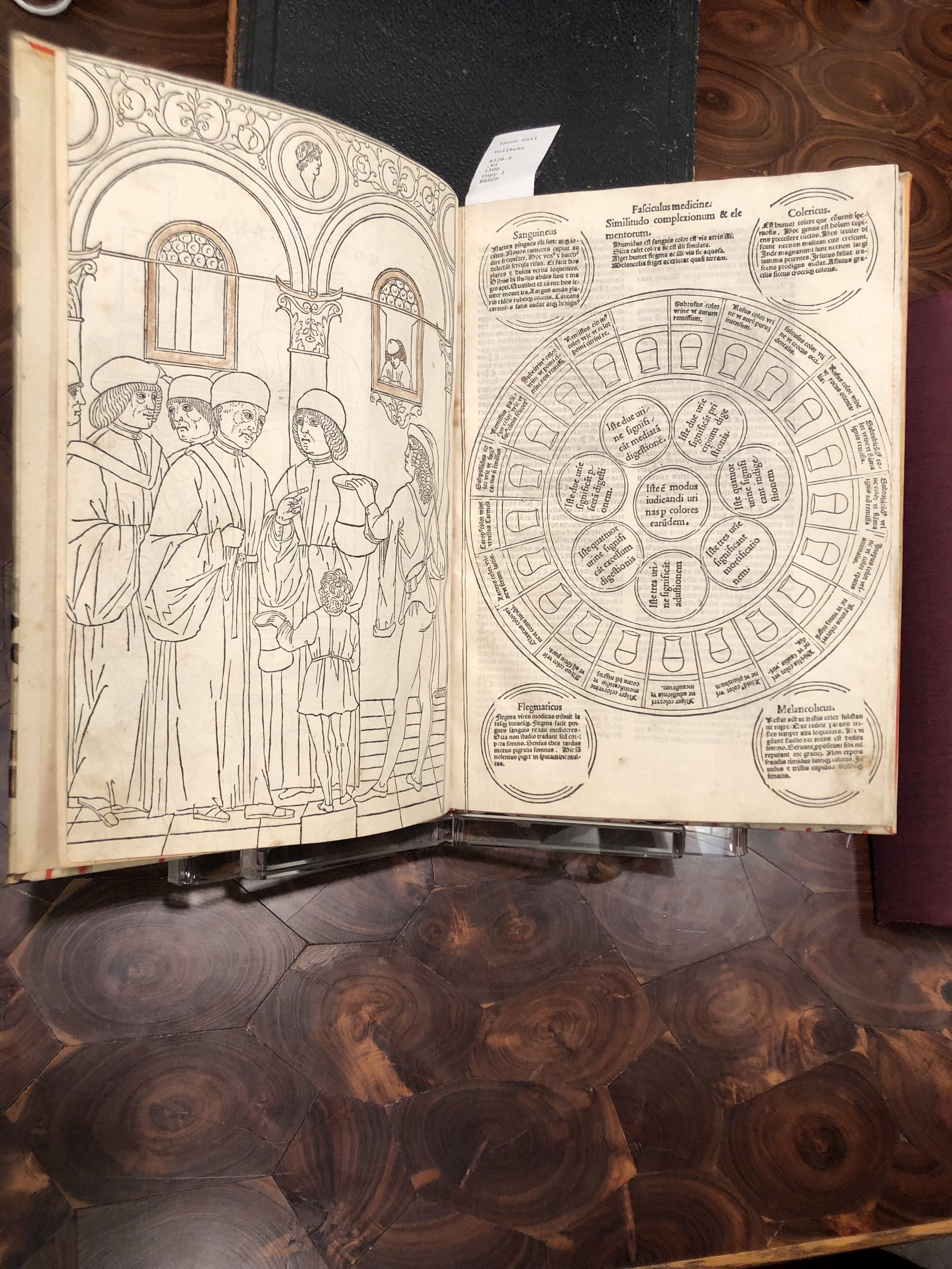
A woodcut carving of a physician whose job it is to interpret the ailments of patients by examining their urine. Notice the “pages” bringing samples from patients at home. The facing page has a interpretation guide. I think this was from the early 1500’s. Not long after the Guttenburg Bible.
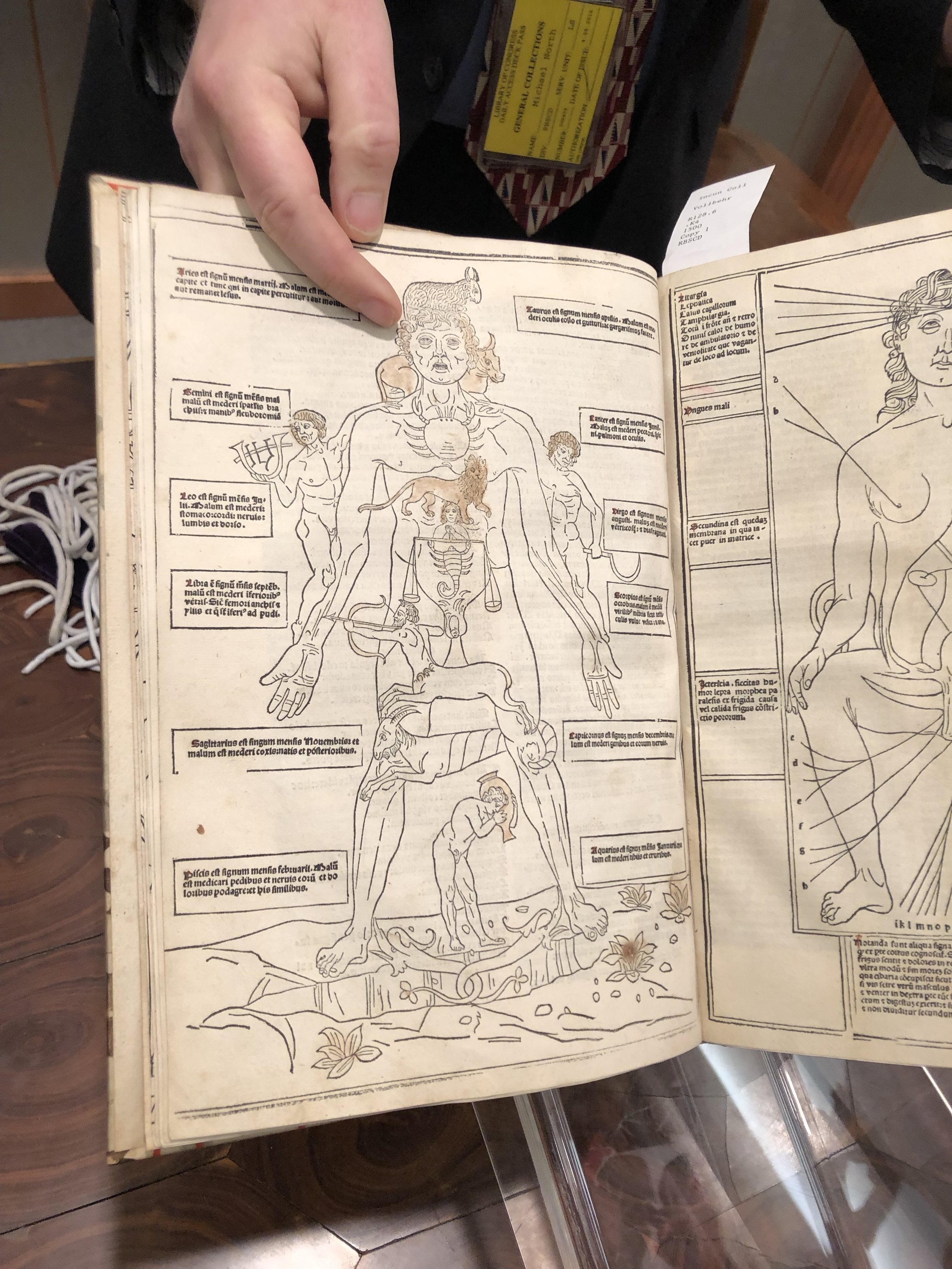
A page illustrating astrological medicine.
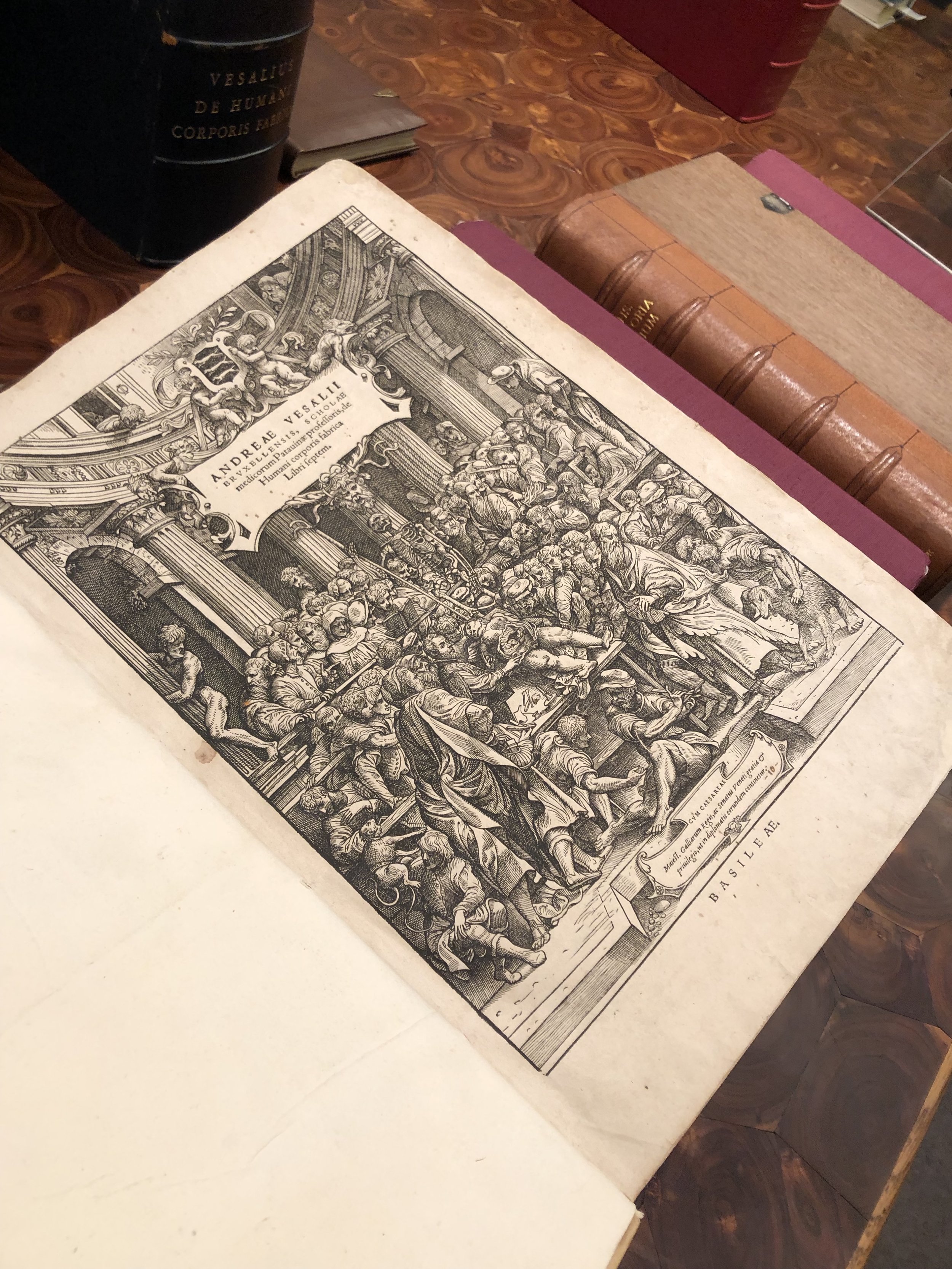
De Humani Corporis Fabrica, printed at Basel in 1555, by Andreas Vesalius. Vesalius didn’t publish anything he didn’t observe himself through dissection. One of the pillars of modern anatomical study. So amazing. These were woodcuts! This is the title page inside. Vesalius is the man with his hands in the body.
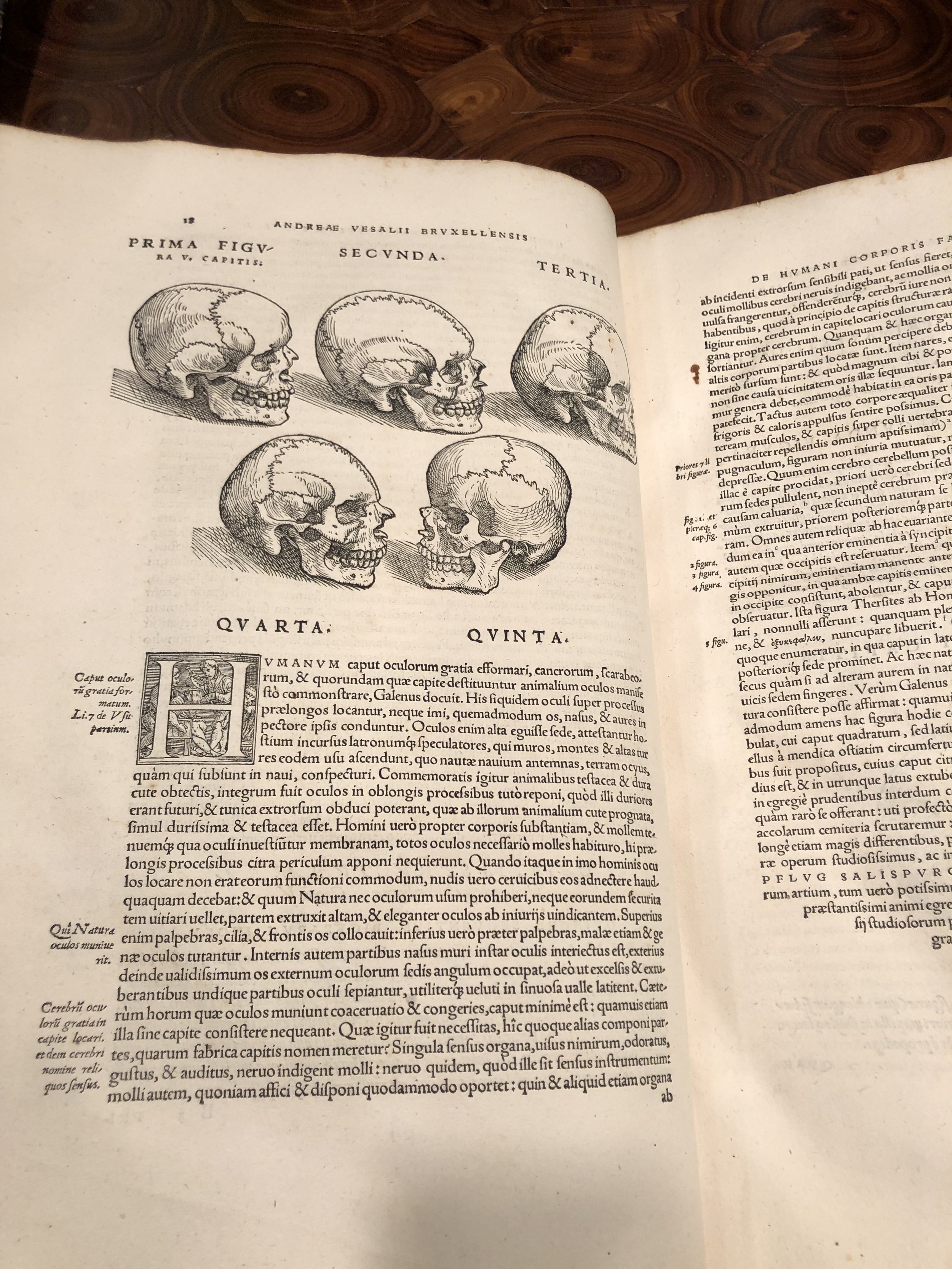
Another page from the book.
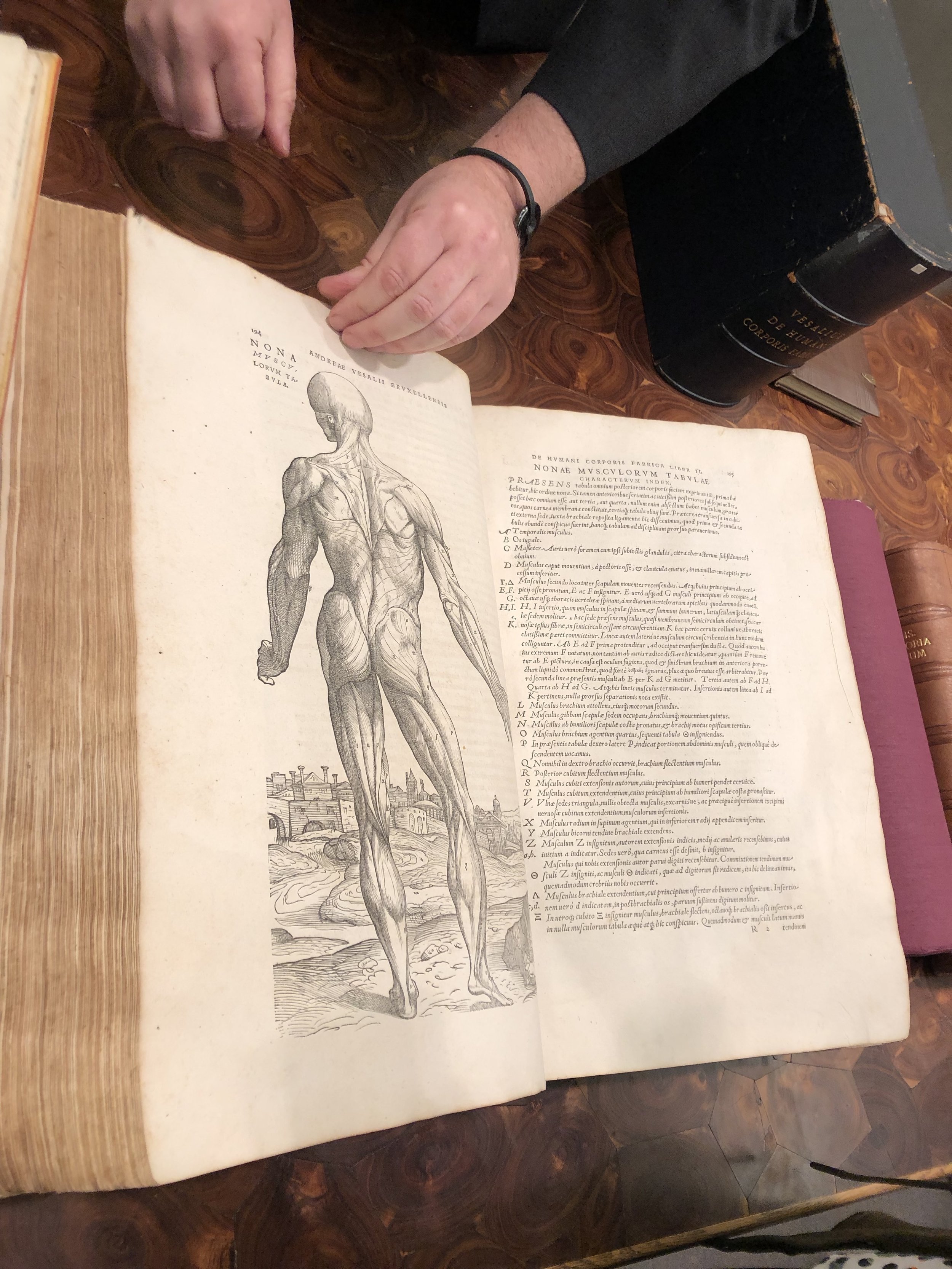
The book is amazing, but especially known for the muscular detail sketches.
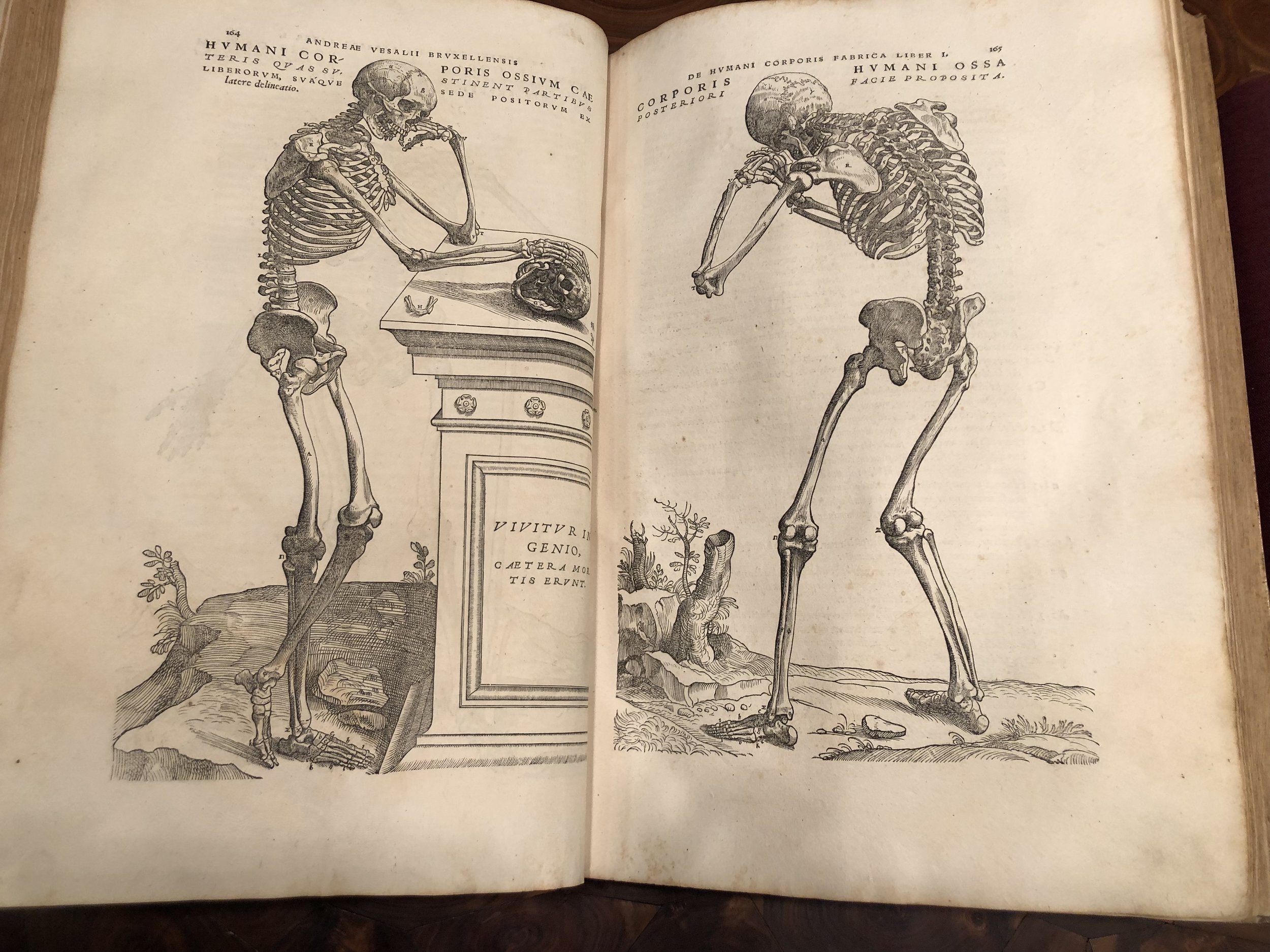
Love these.
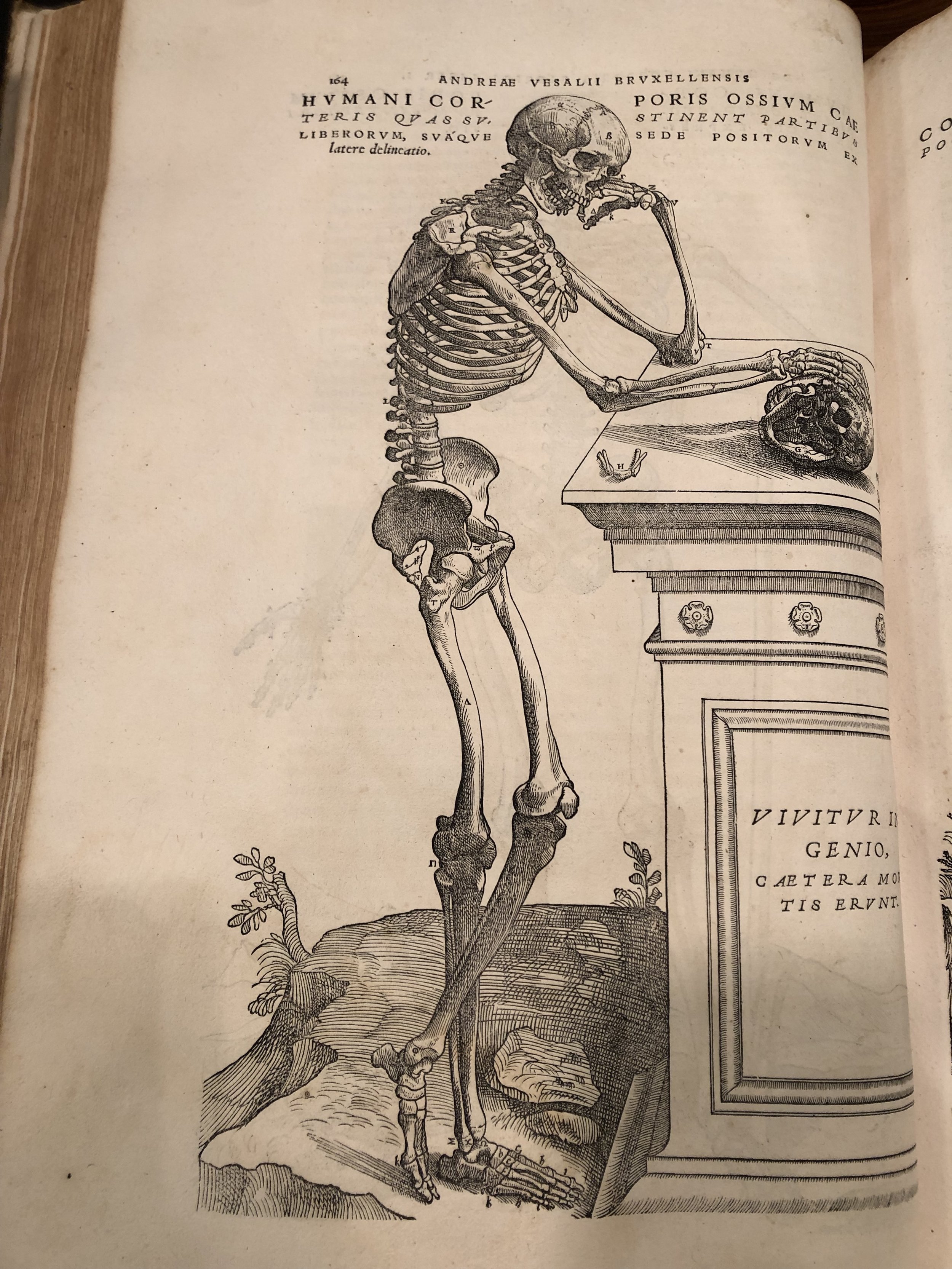
Detail of the previous page.
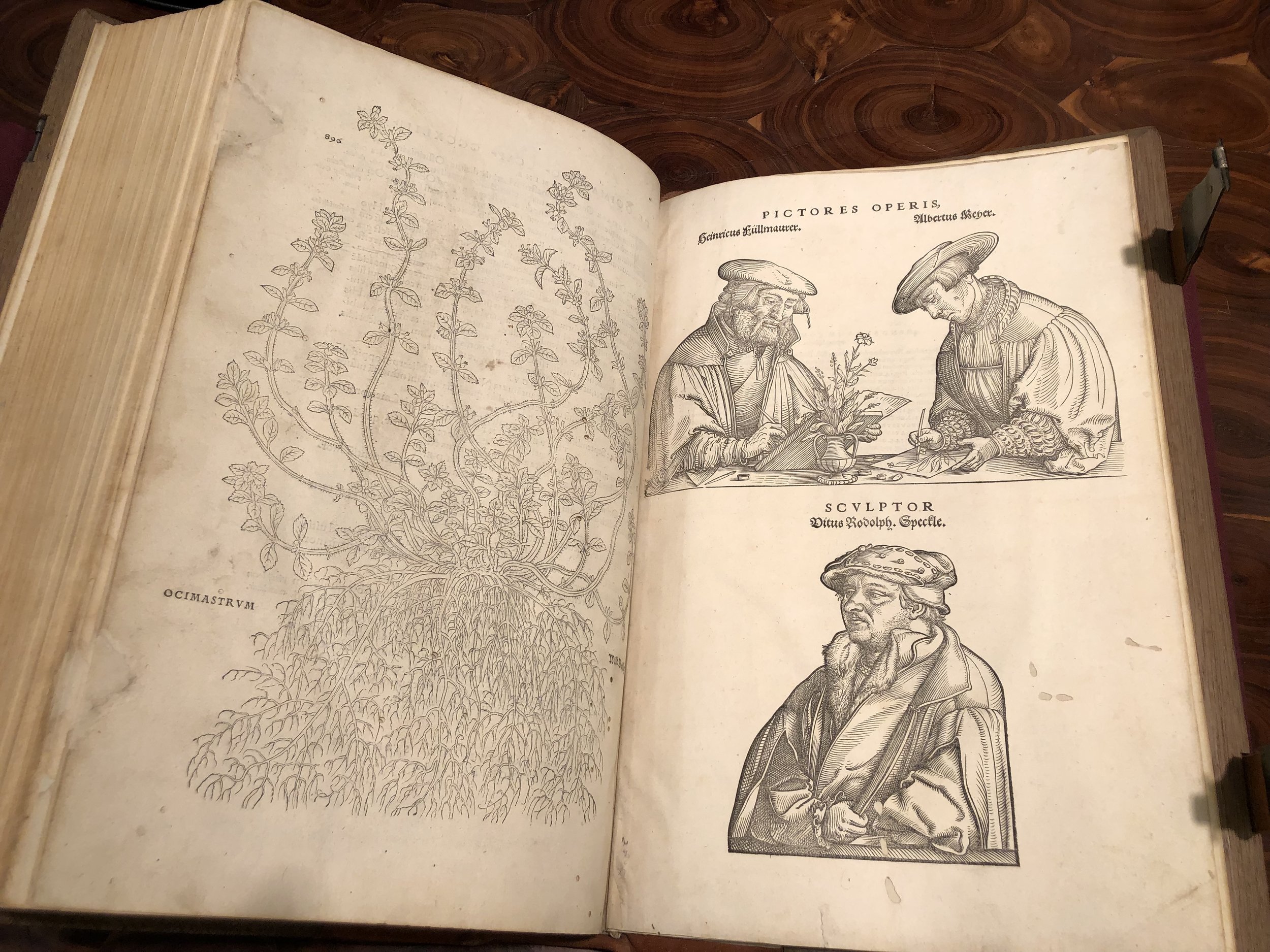
I can’t remember the name of this book, but it was published around the same time as the De Humani Corporis. These books all questioned the prior knowledge of doctors. This one tackled plants, and the author insisted that doctors needed to know about the plants, aka medicines, that they were prescribing their patients—including how to identify them. Seems wise! This page also features portraits of the artists, a rare inclusion.
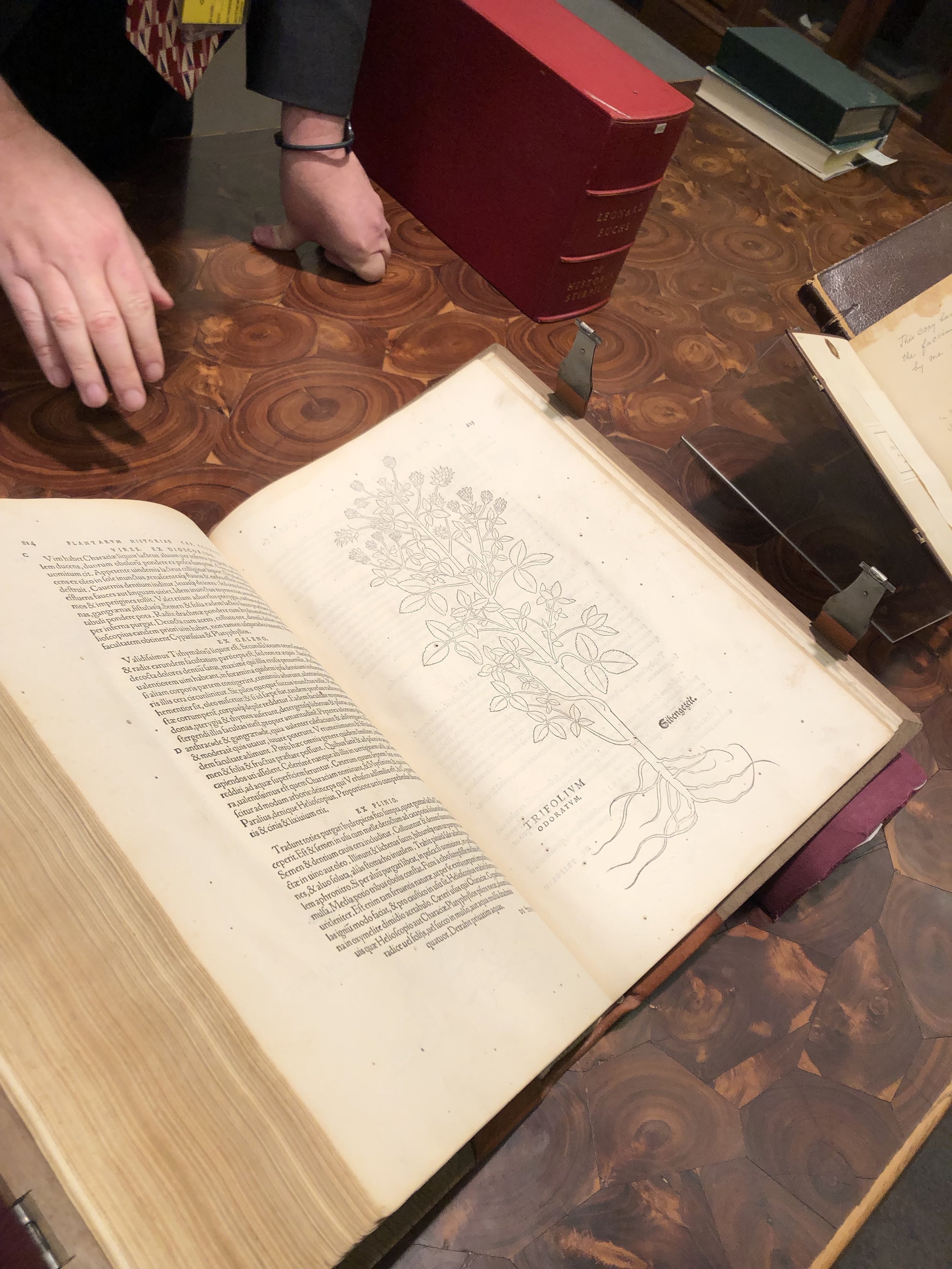
A detailed plant engraving from the same book.
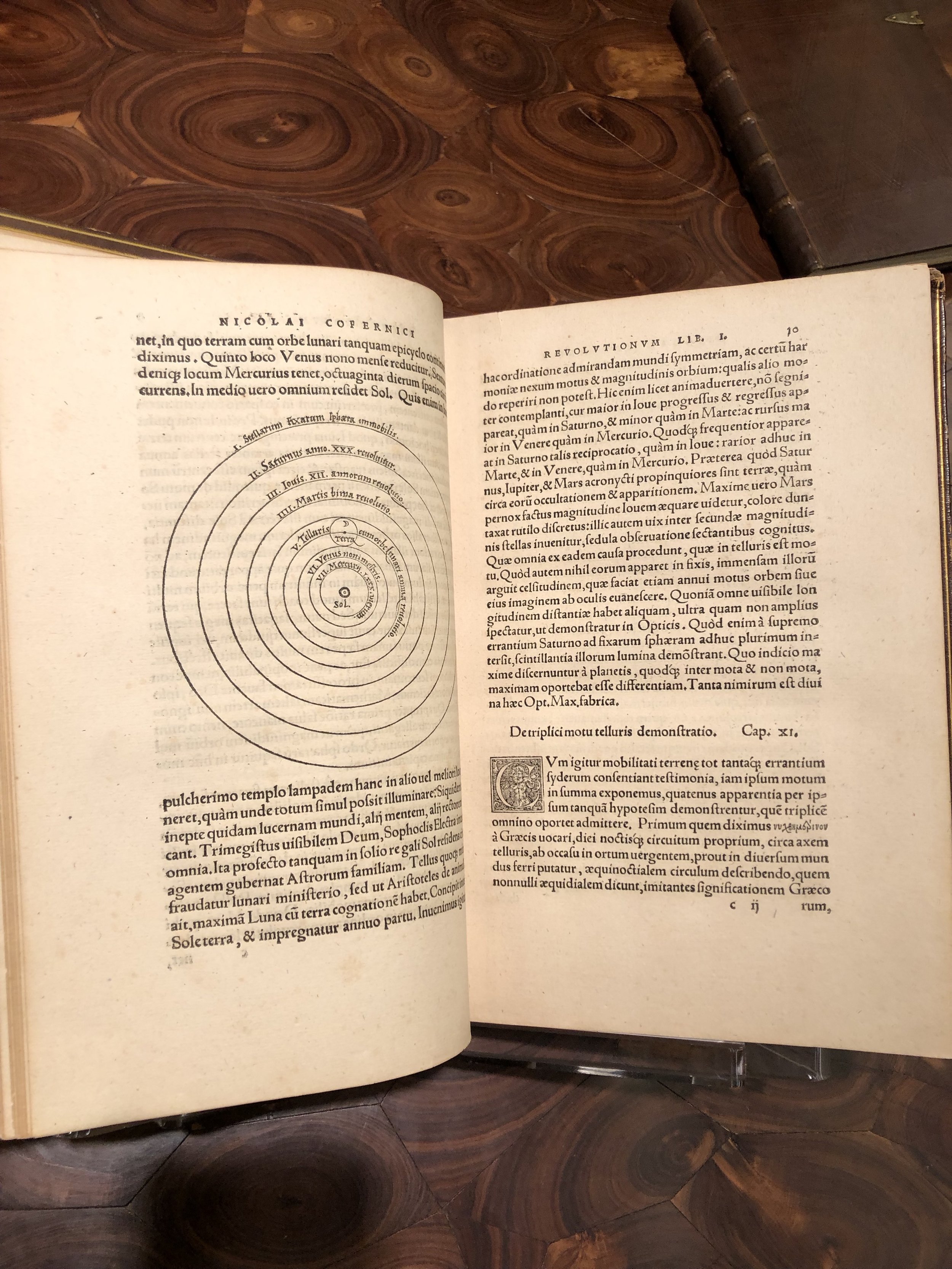
Again, this book was published around the same time as the previous two books. This was the diagram that, literally, had the Catholic Church excommunicate him. A fundamental shift of thinking from an solar system that revolved around the Earth to one that revolved around the Sun. This book was published after his death, because it was so controversial.
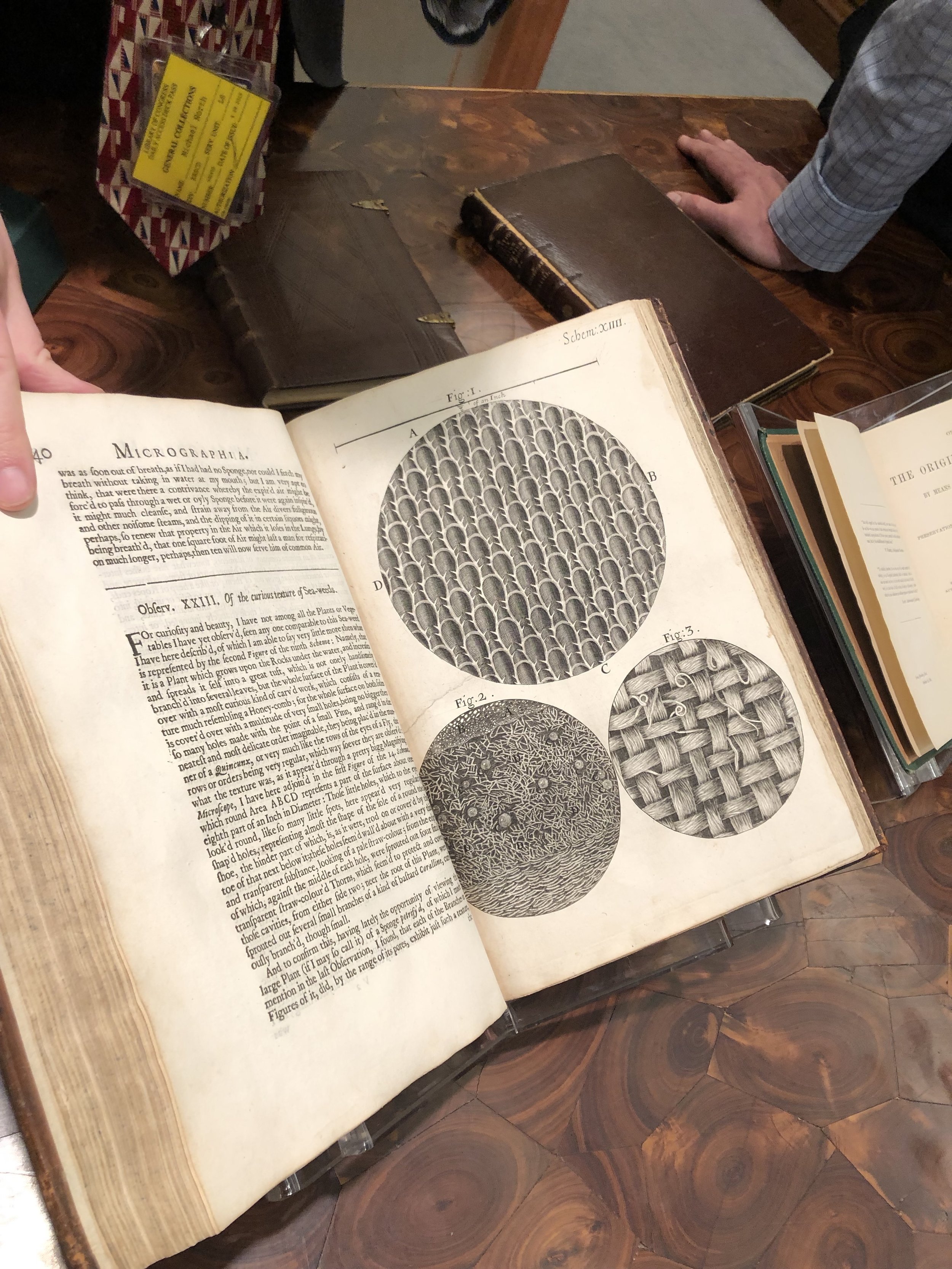
A page from this amazingly detailed book of things seen under a microscope. Notice the beautiful drawing of a piece of woven fabric to the right. I have my students draw pictures of fabrics under the microscope for my Forensic Science class, so I loved this.
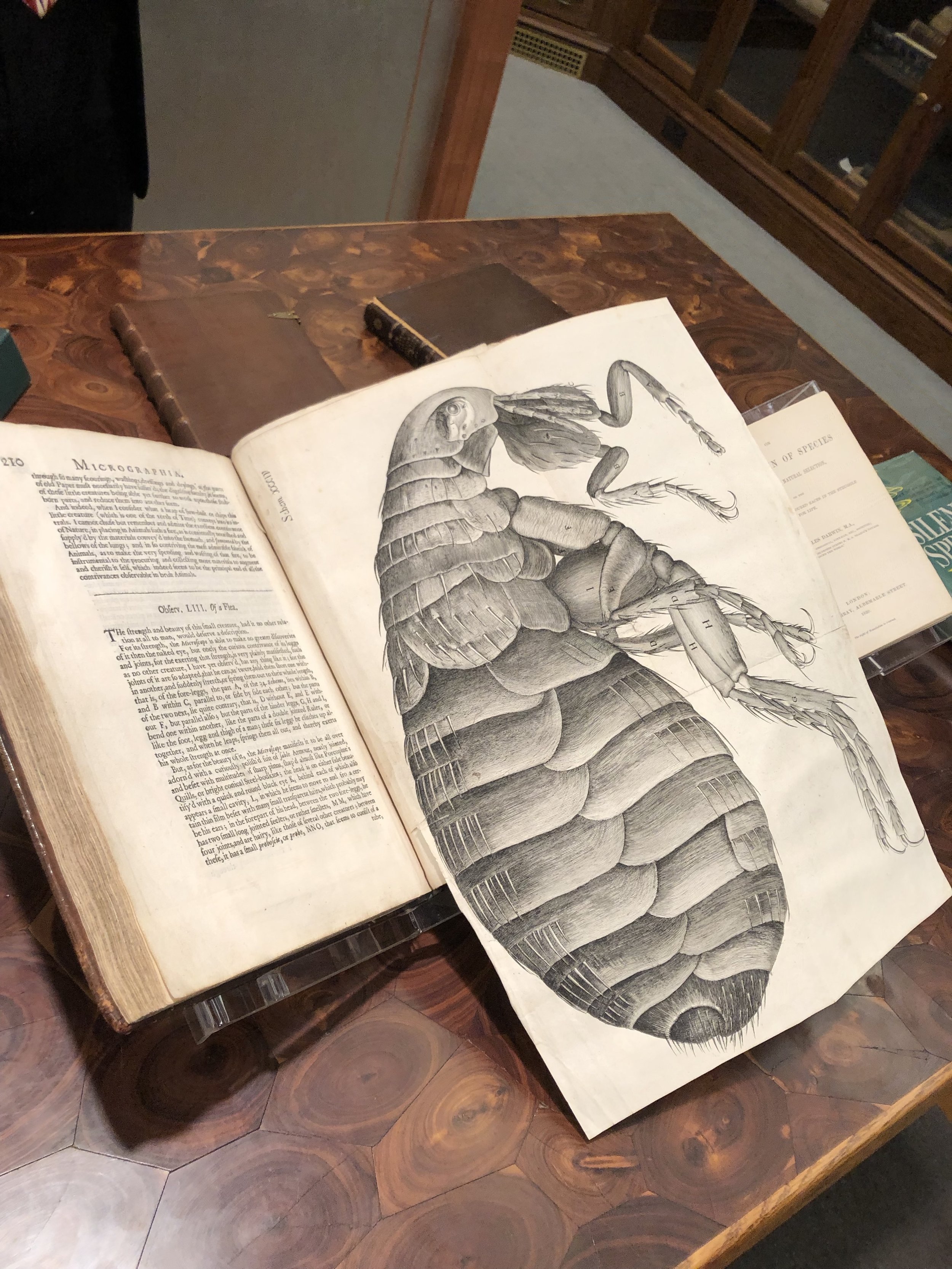
An image of a flea.
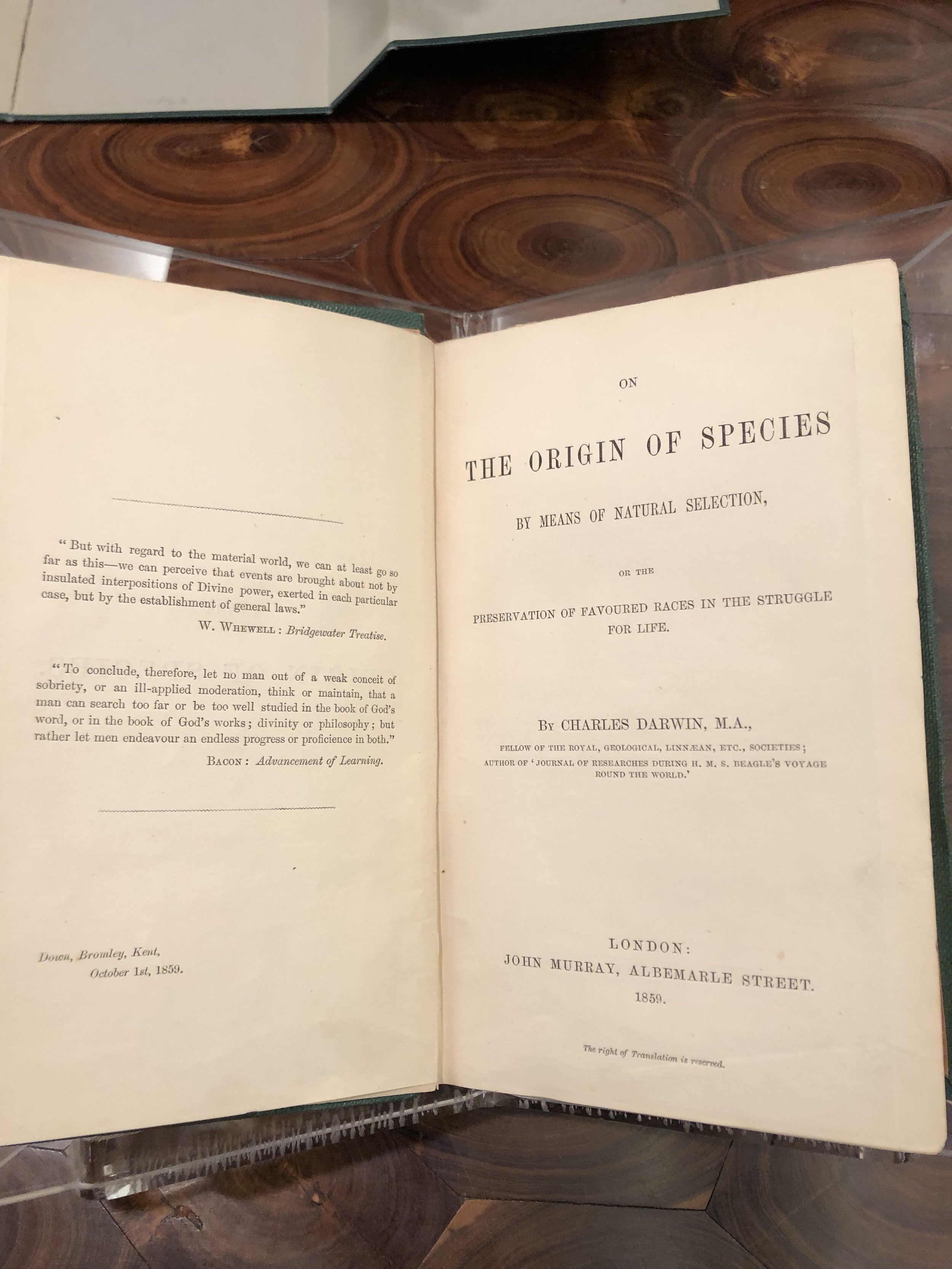
Oh man… amazing. A first printing of the first edition of the book that would change … pretty much everything in biology. We know it’s a first edition, and therefore at least $10,000 more valuable, because on p. 20 of the 1st printing, the word “species” was misspelled.
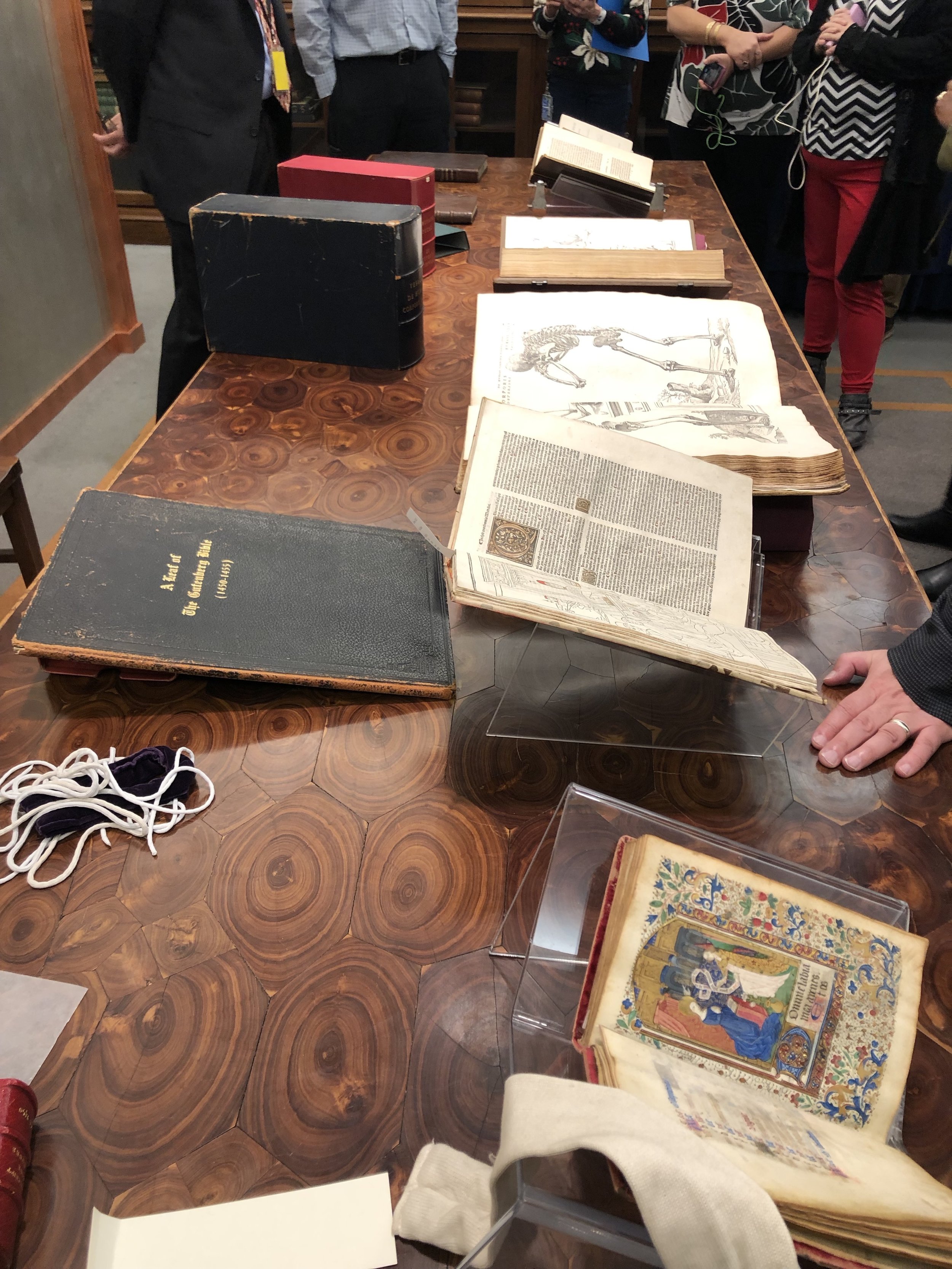
Quite literally… here are all of the books we got to look at…
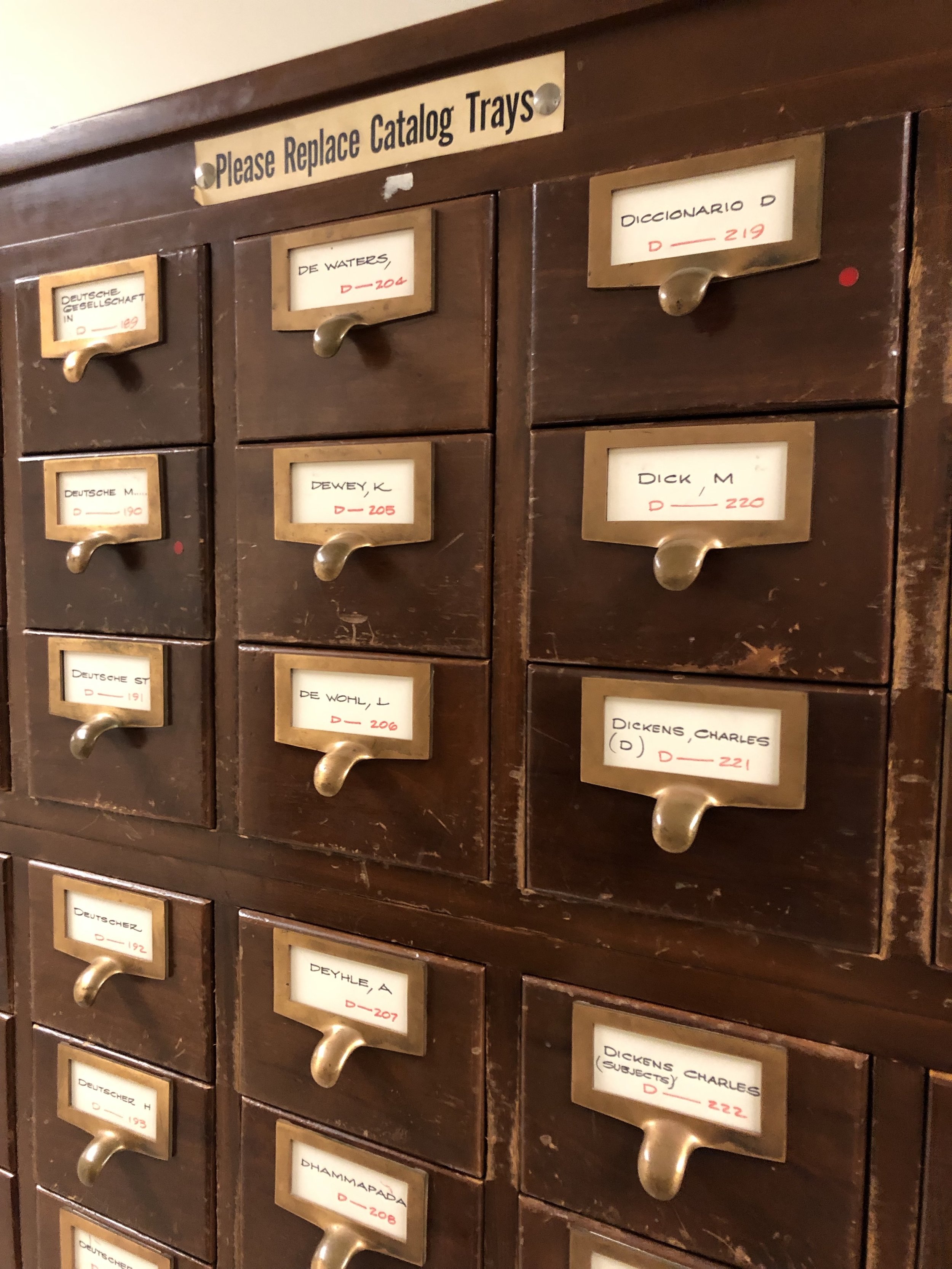
A close up of the original card catalog of the Library of Congress.
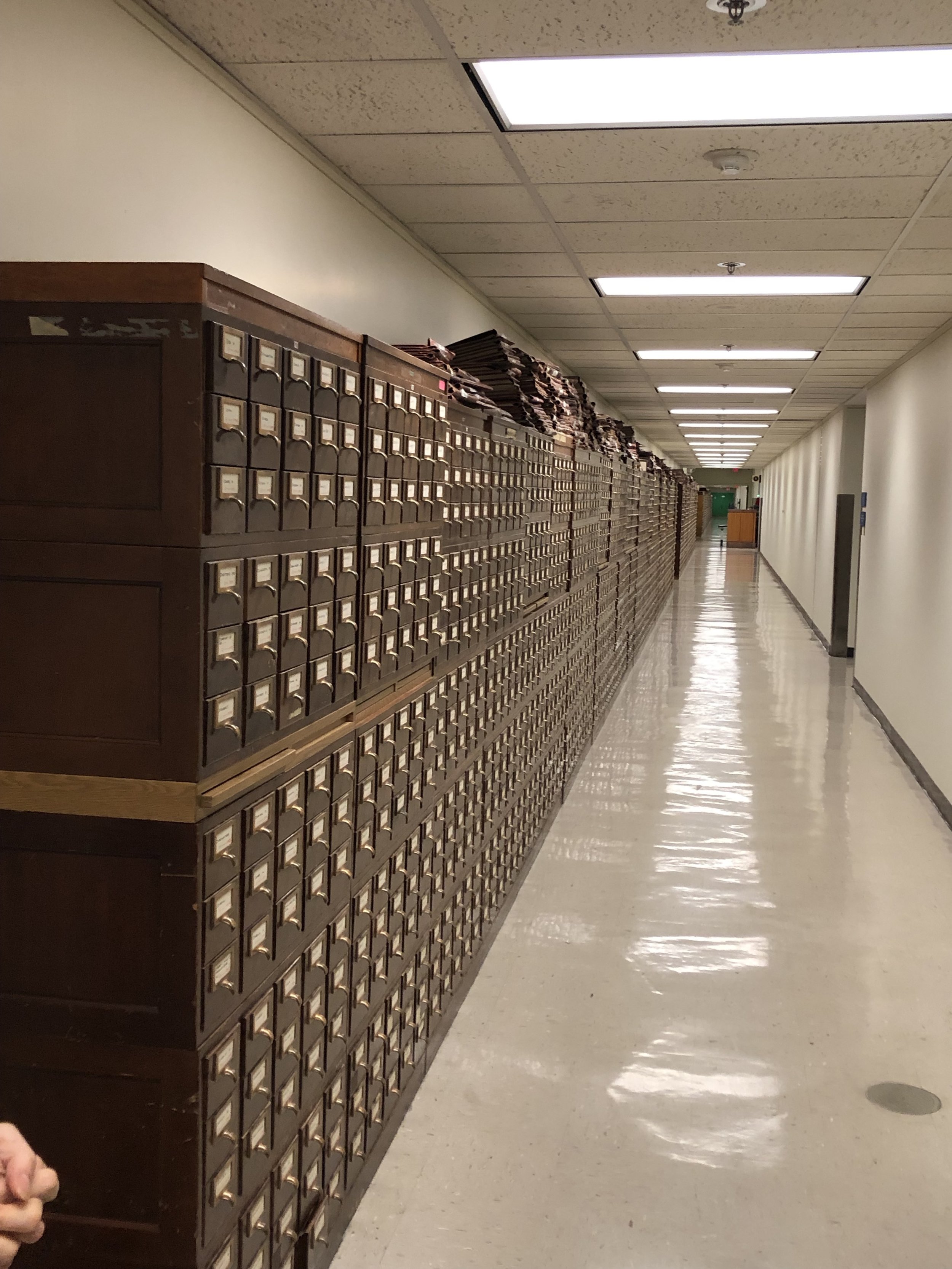
A whole city block, to be precise!
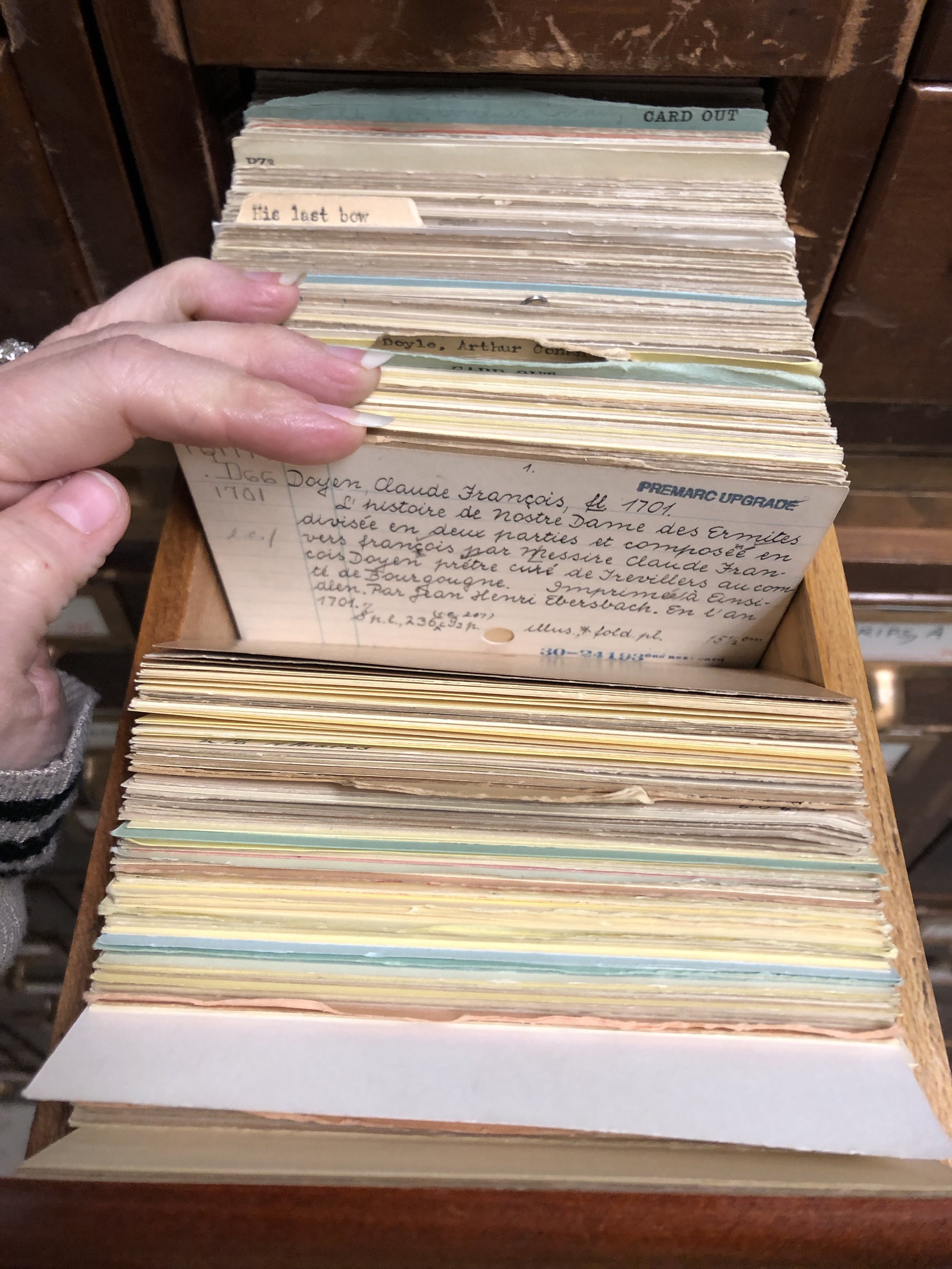
… From the card catalog.
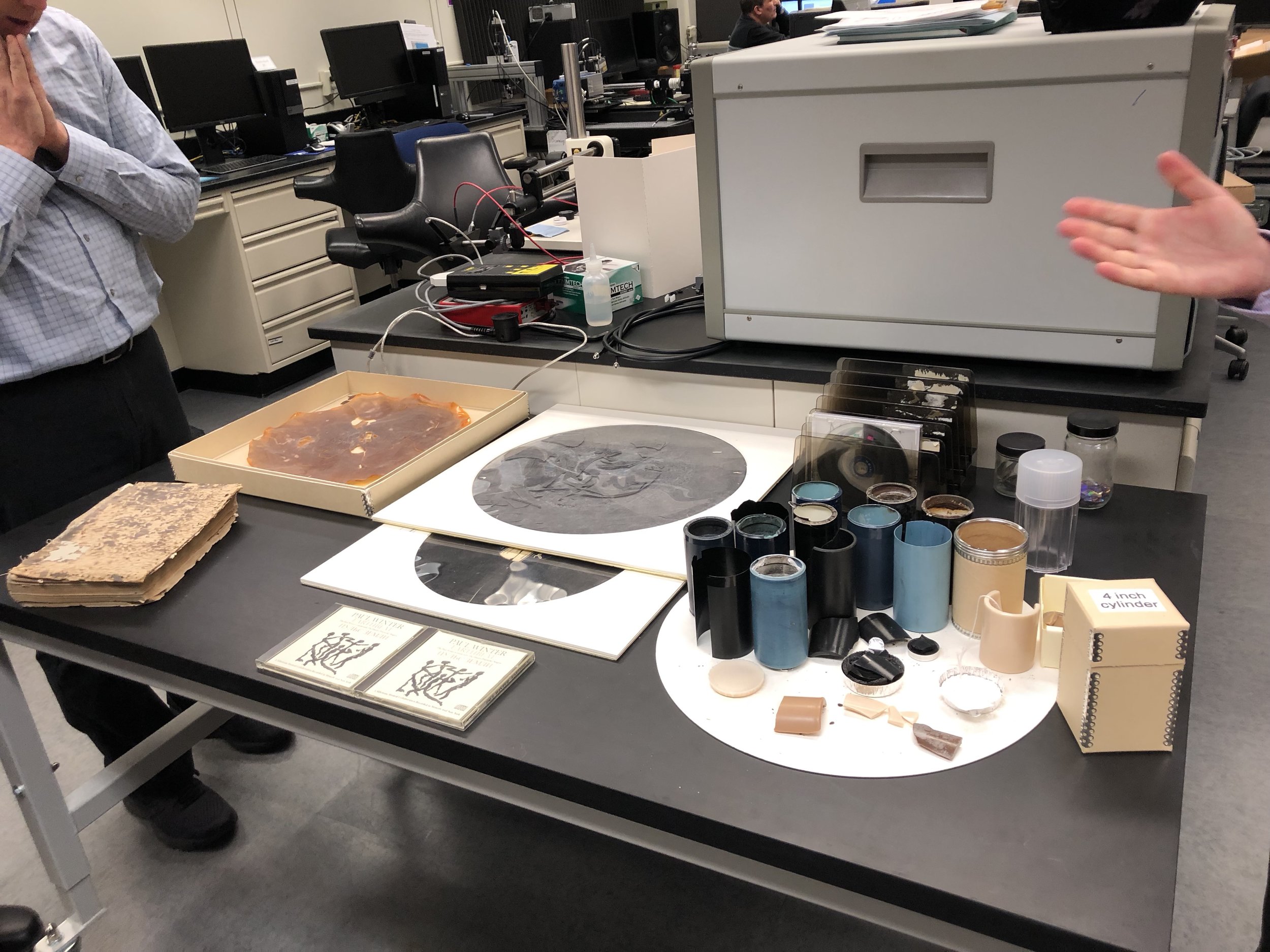
The library has its own preservation staff. They work on all of the library’s holdings, including books, recordings, artifacts, etc. Here’s a table of “sad things.”
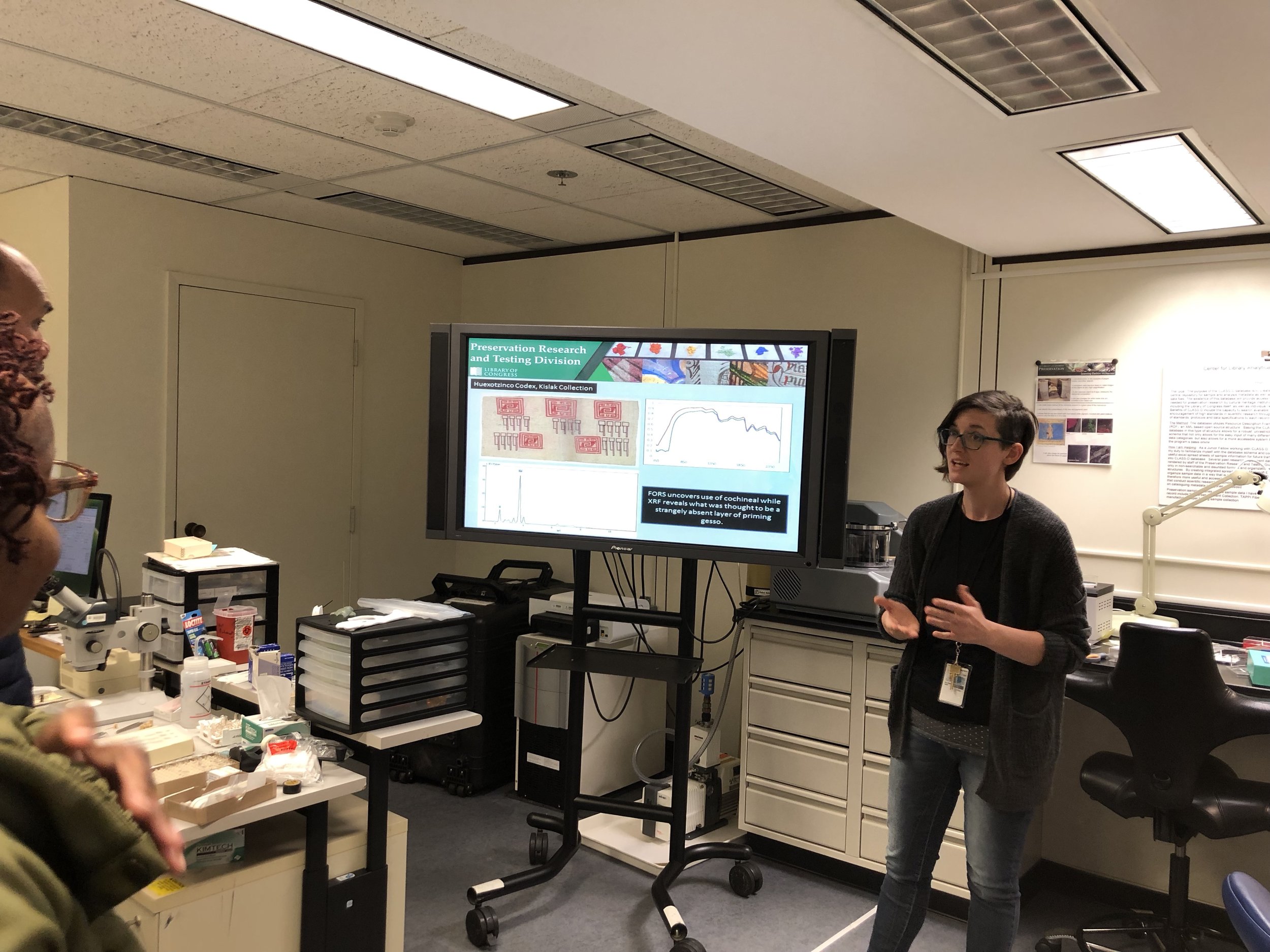
Of the scientists in the preservation lab told us about some of the projects she’d worked on, using spectroscopy to determine the type of inks and other materials used in various things.
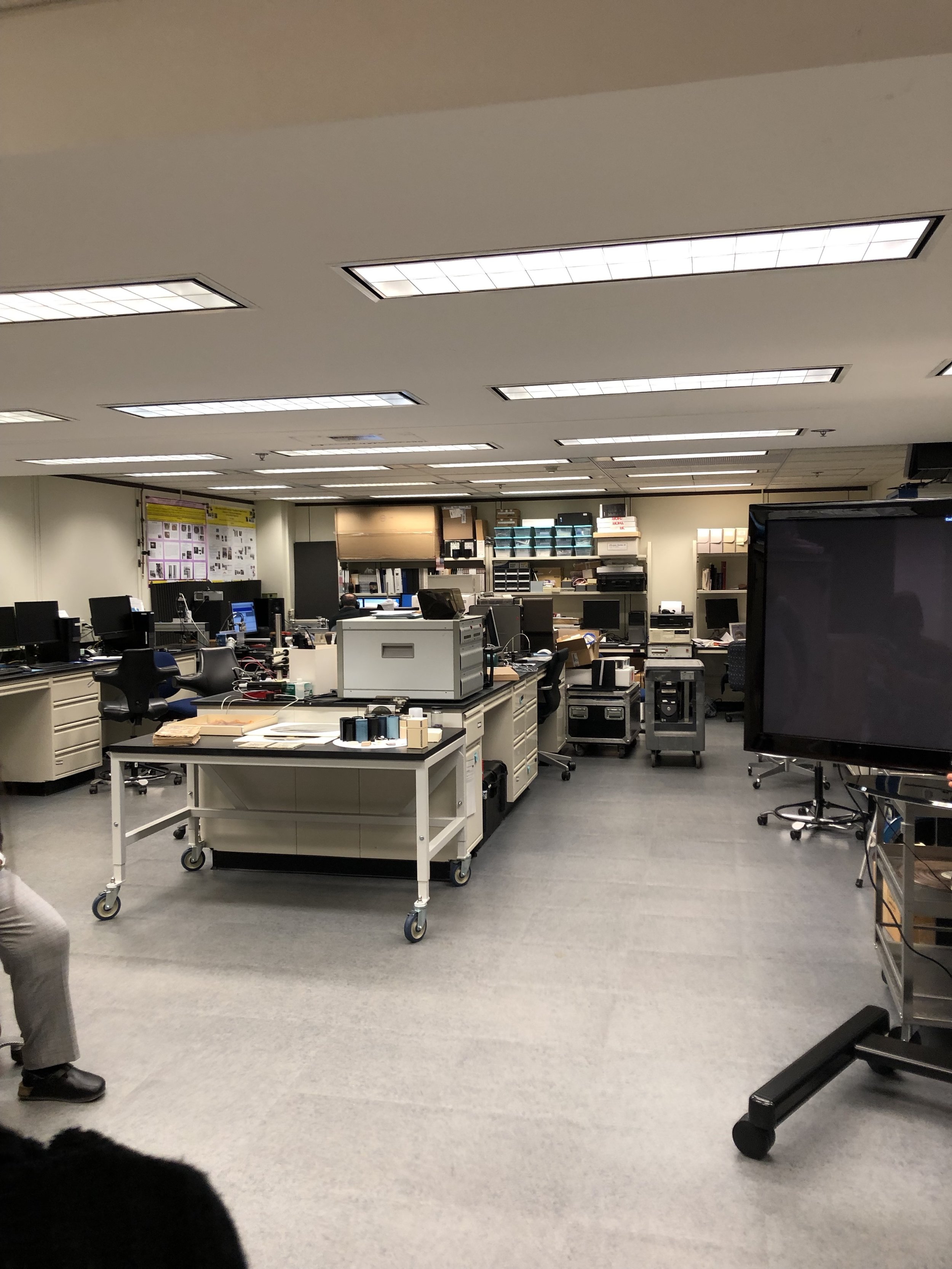
A view of the lab and some of the amazing equipment they have to help preserve and investigate old things.
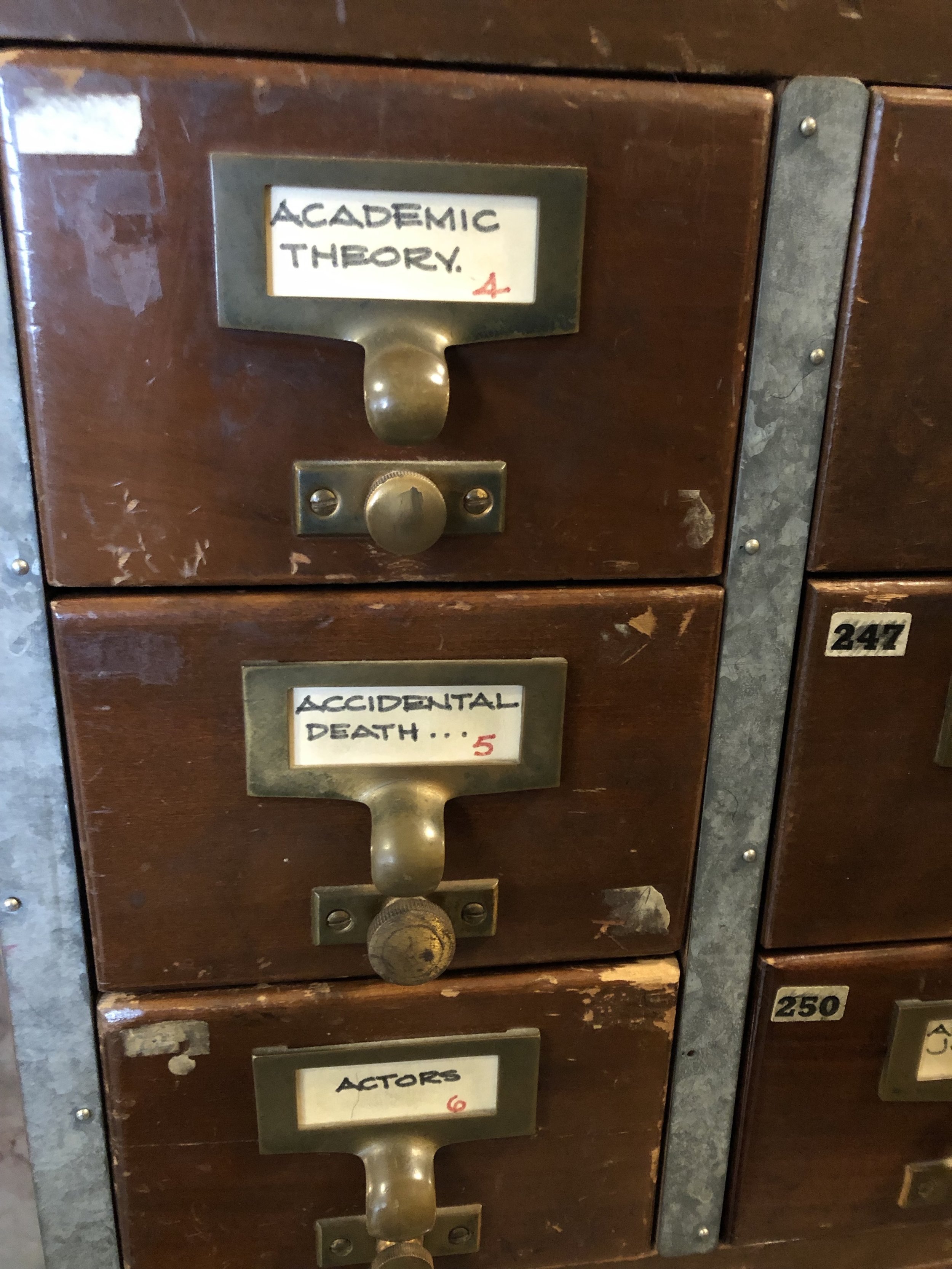
The first of three close ups of another card catalog in the serial catalog of the science and technology reading room. I just liked the subjects. :)
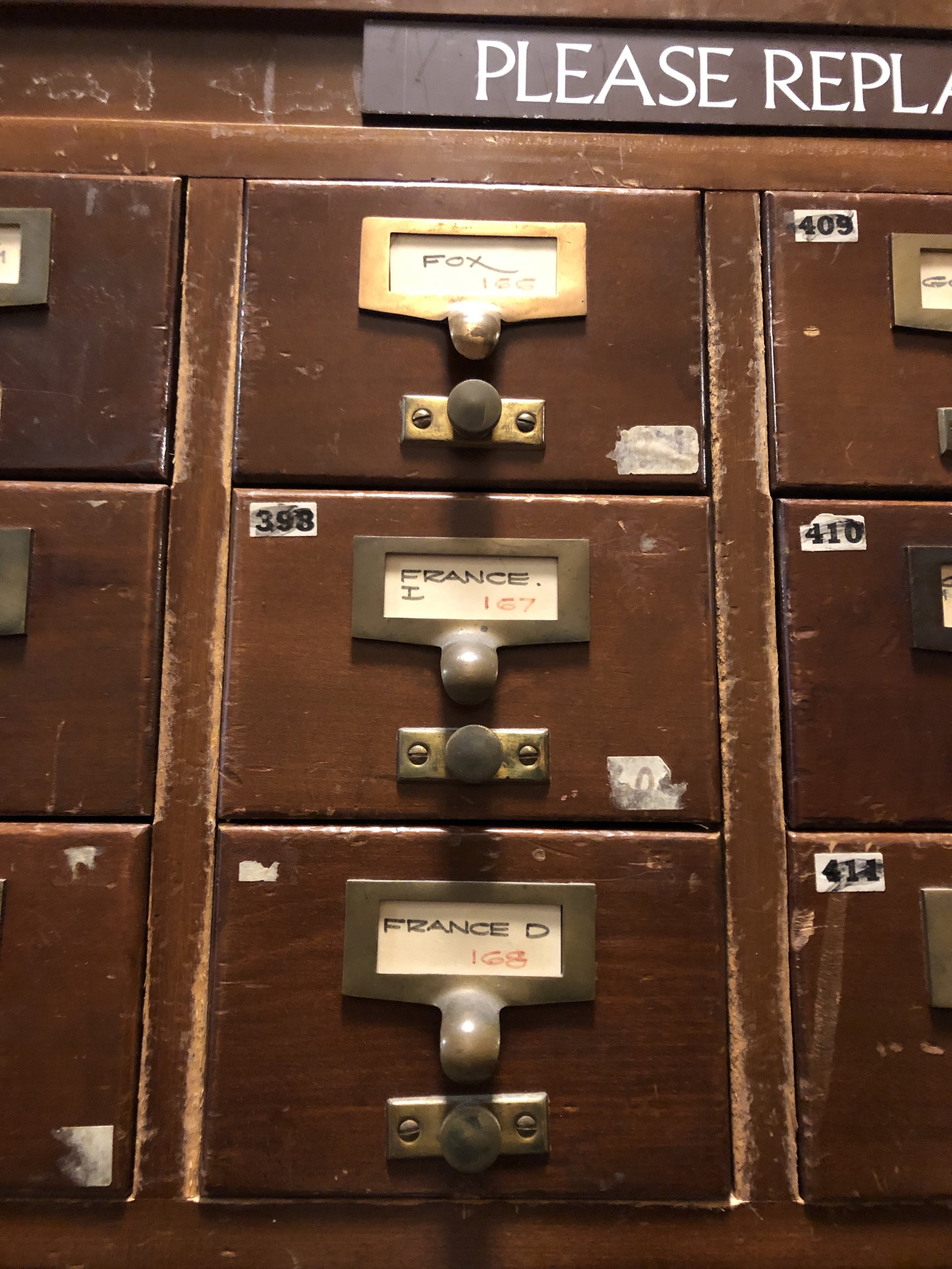
Image 2/3. Also, the handwriting! So beautiful!
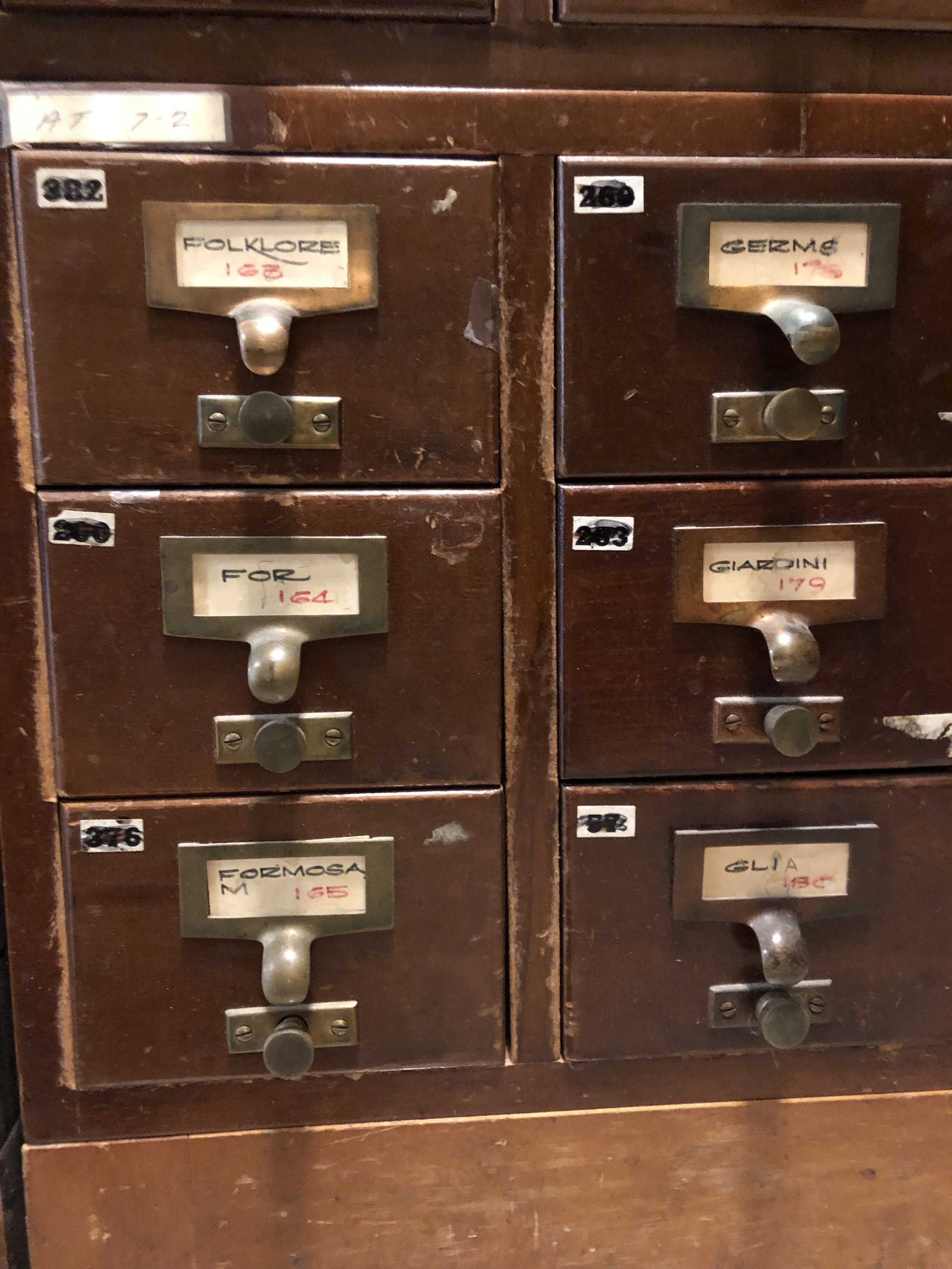
Image 3/3
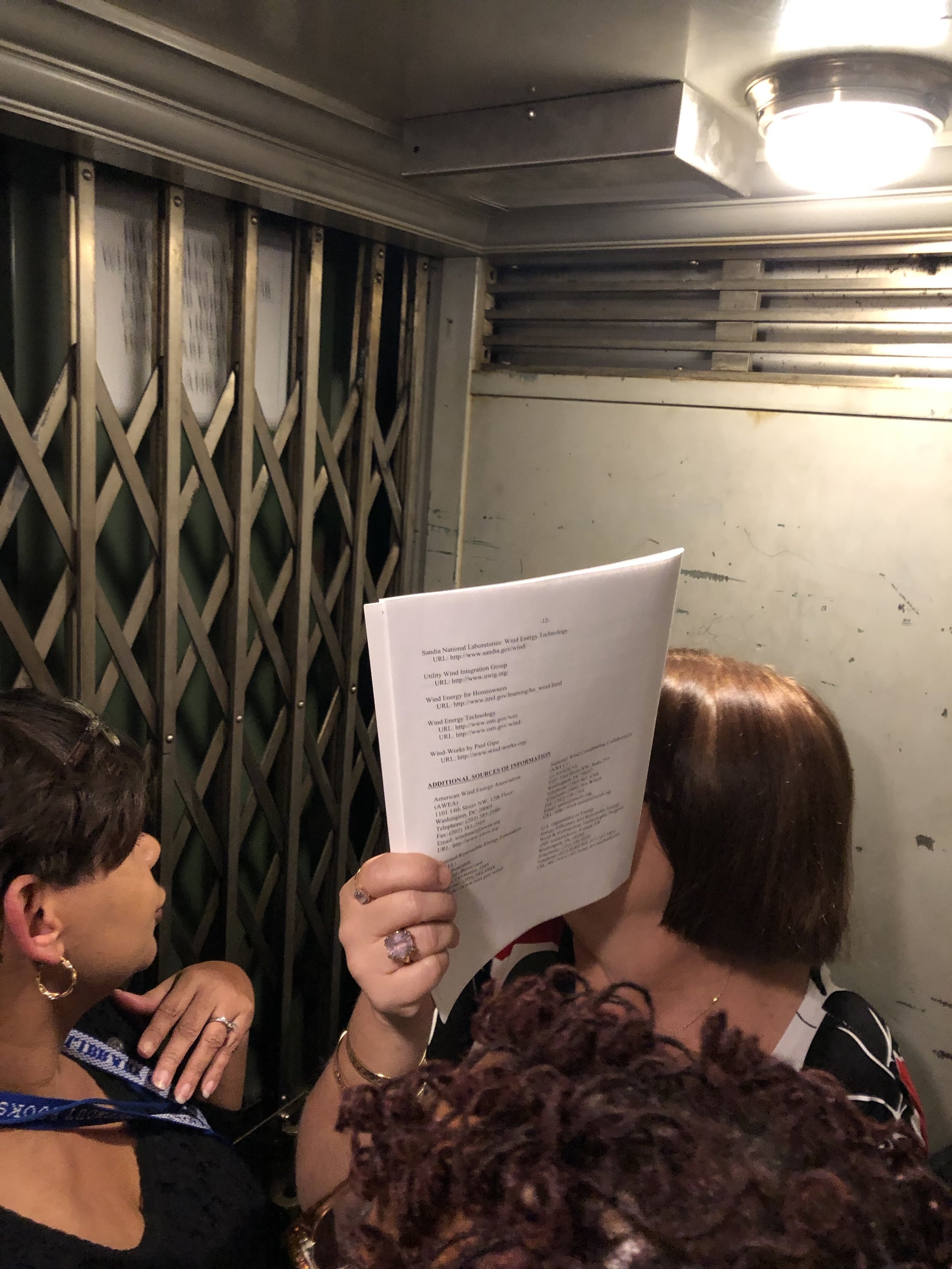
On the way to the stacks… in an ancient elevator.
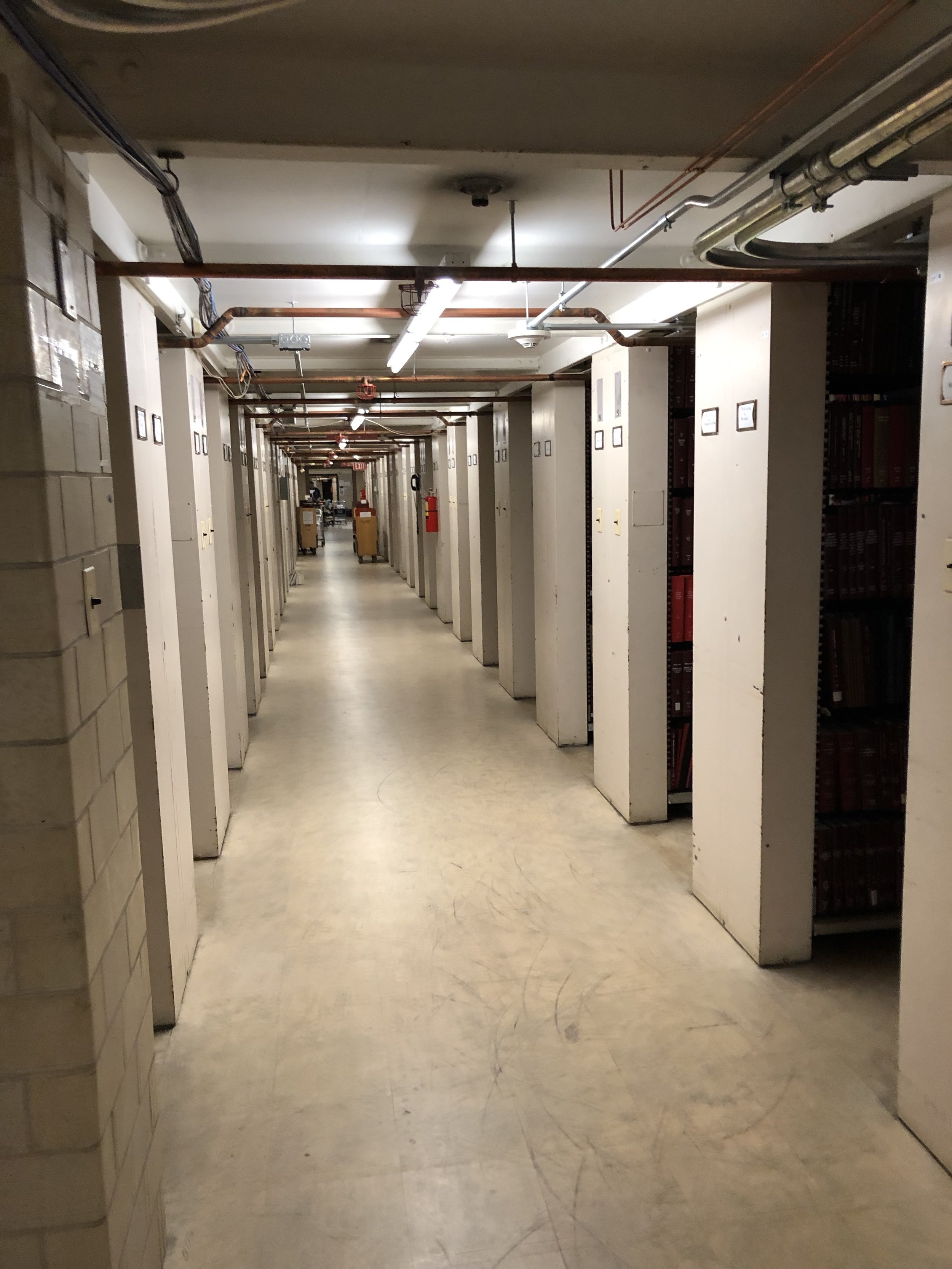
Where few tread…
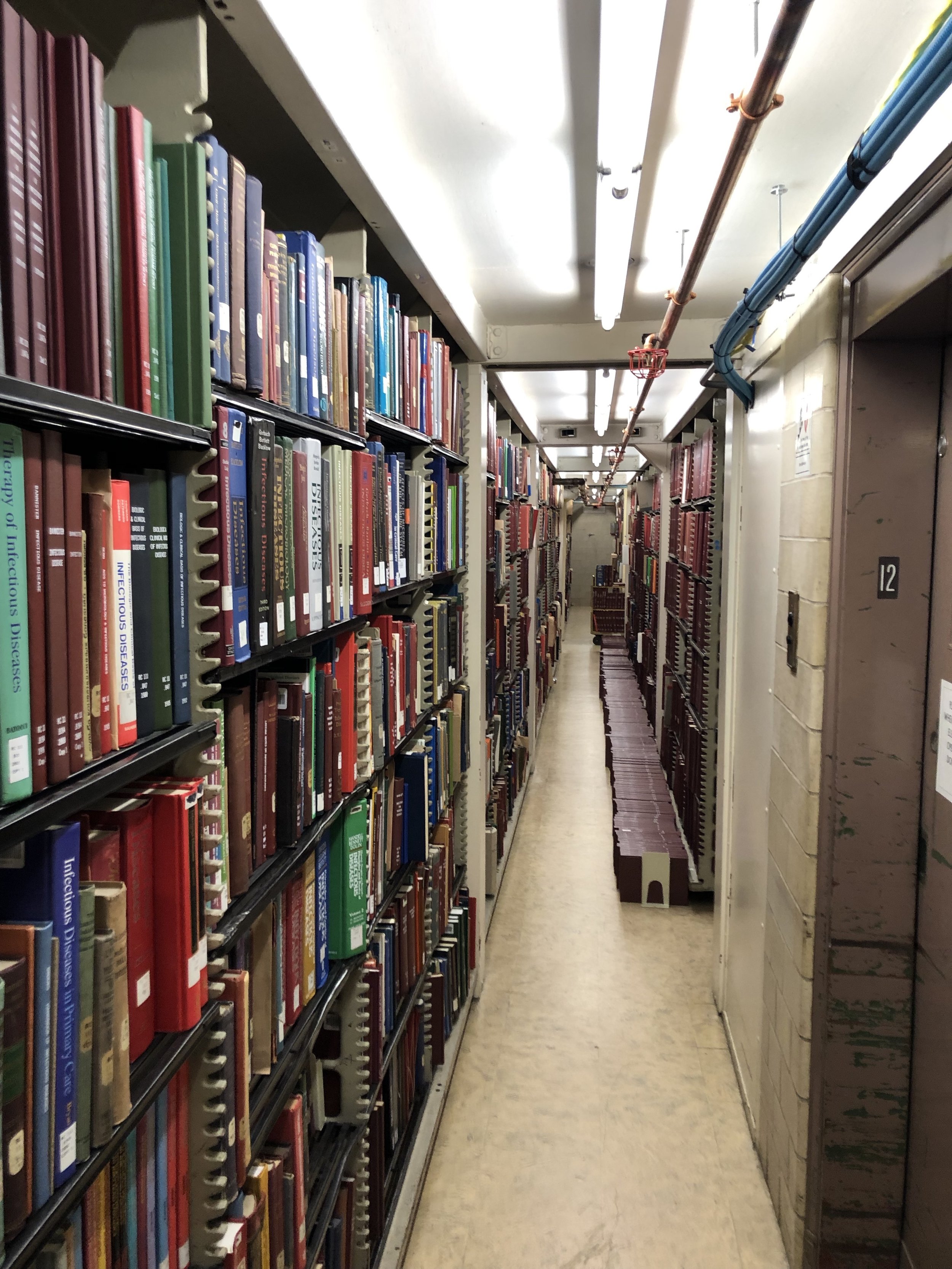
Book stacks actually are built into the building and literally hold up the rest of the structure. You can’t visit the stacks as an everyday visitor, but we were able to go with our guide.
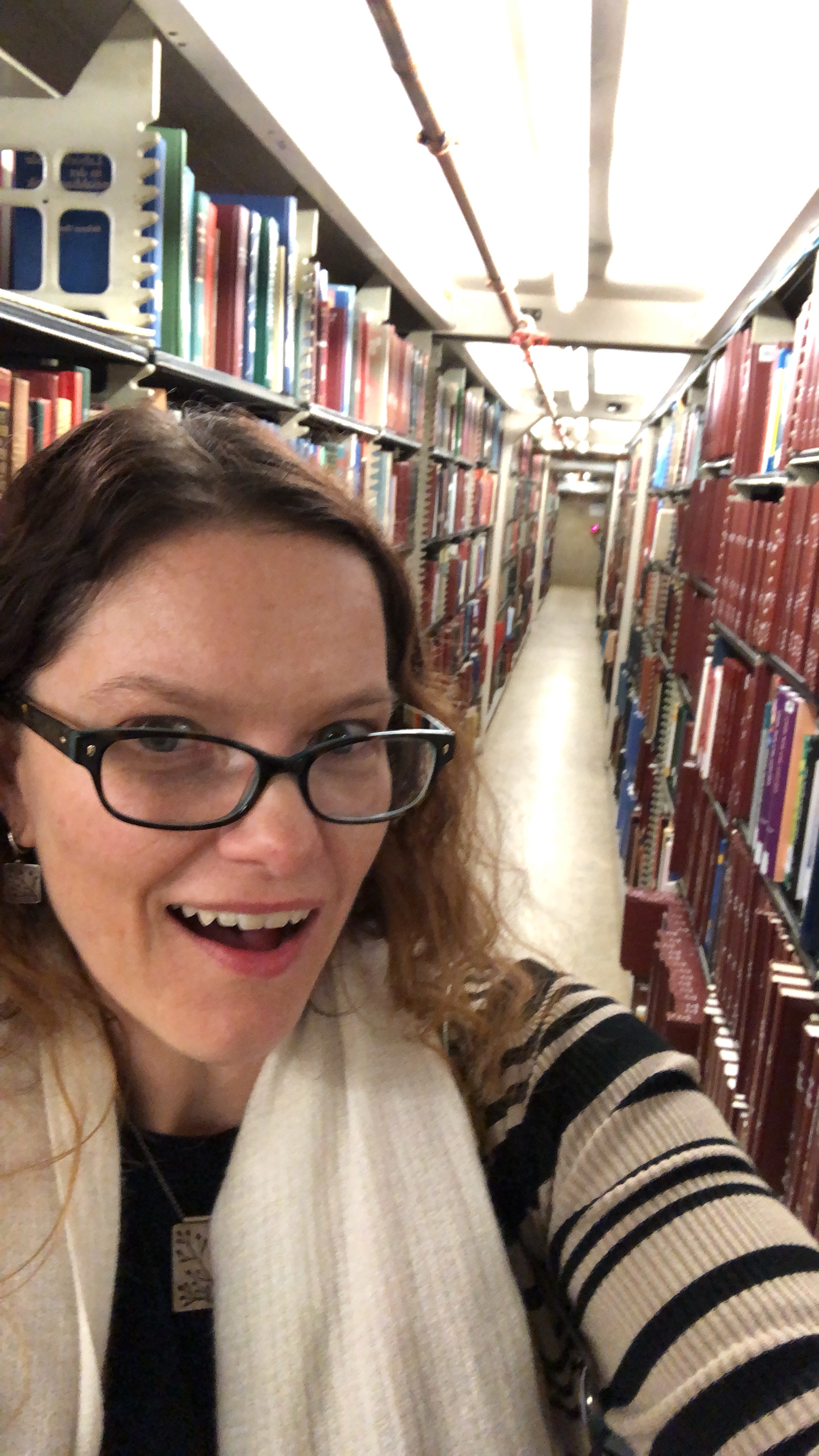
Selfie in the stacks!
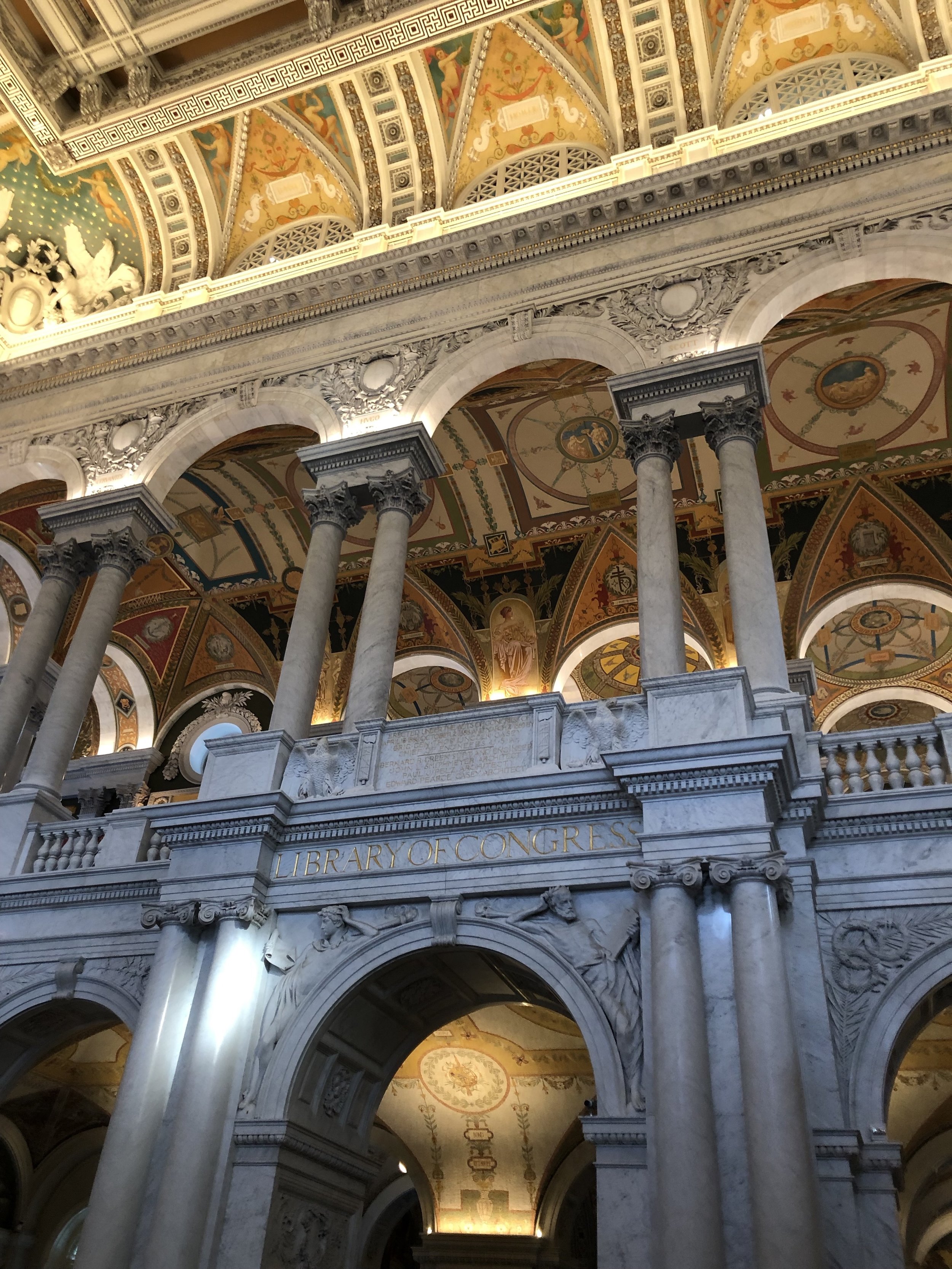
Our last stop was the Jefferson Building. This is the one that everyone thinks of. It is so stunning… it’s my favorite place in DC. It’s just so ornate, and every bit of it is decorated and has meaning and purpose.
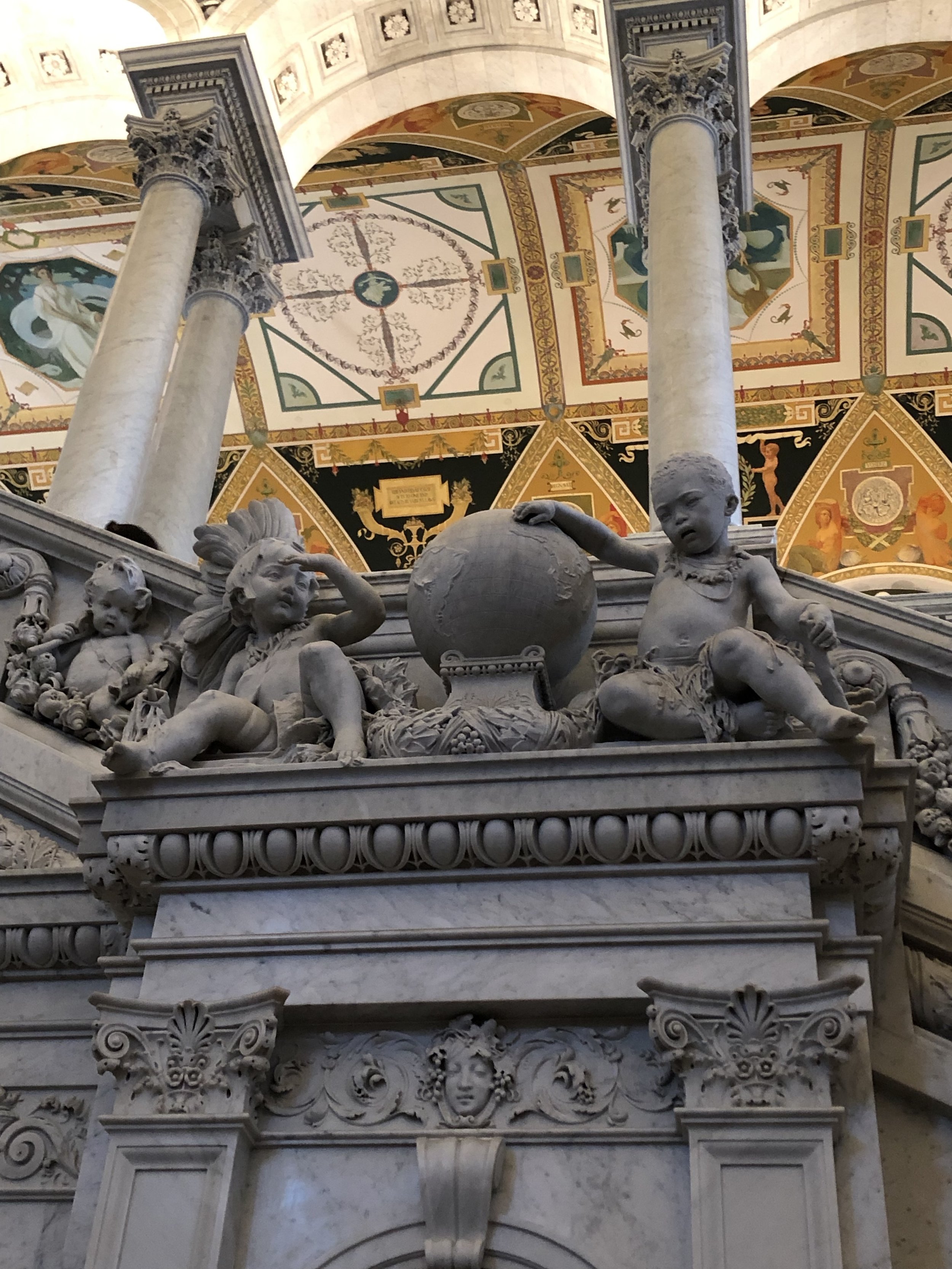
Some of the detail of the main hall. Each cherub in the staircase represented a job, and the two central figures represented parts of the world. The right: Africa, the left: a Native American who doesn’t need to have a hand on the globe, but reaches towards innovation.
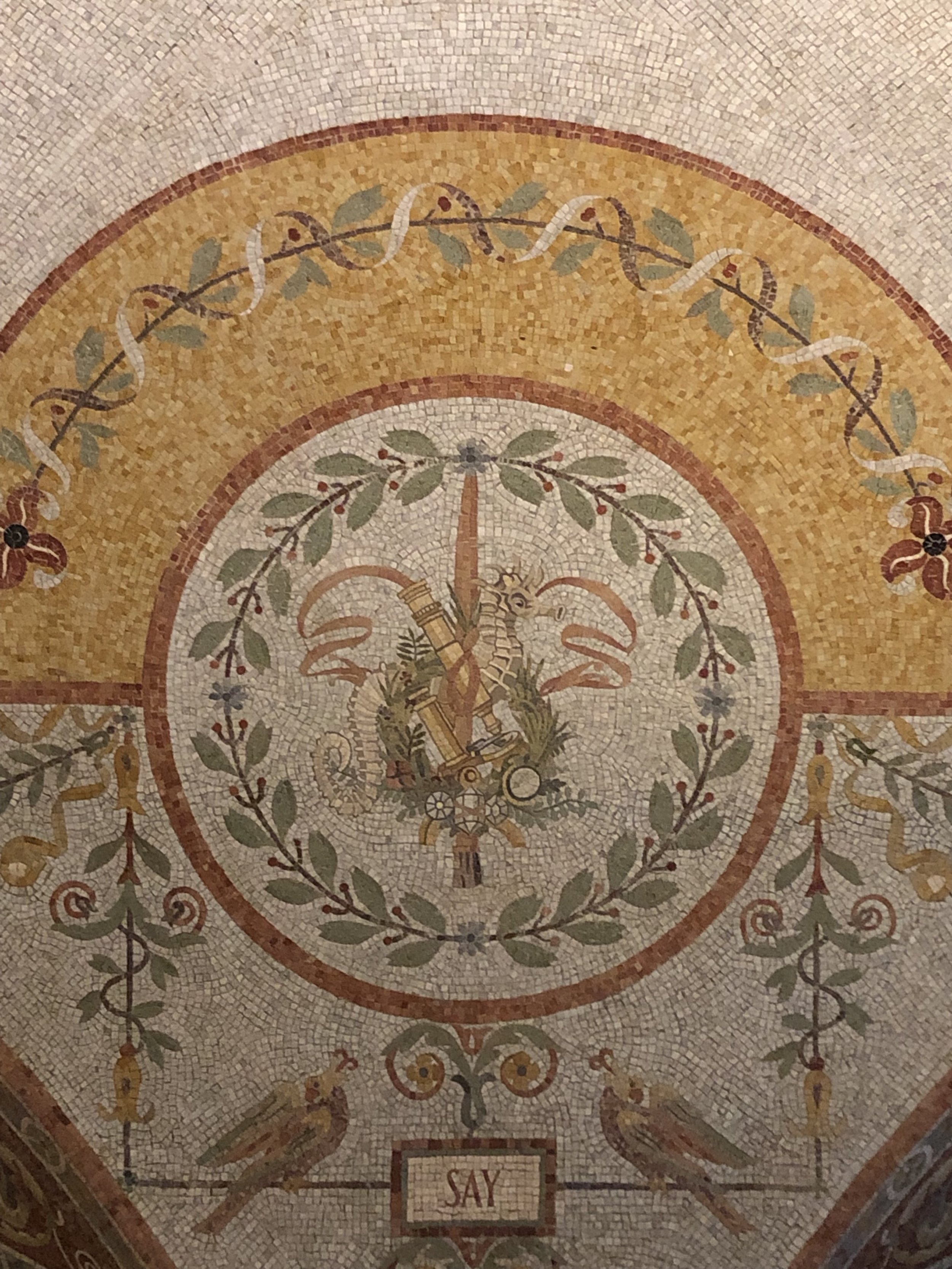
A beautiful mosaic near the great hall representing science.
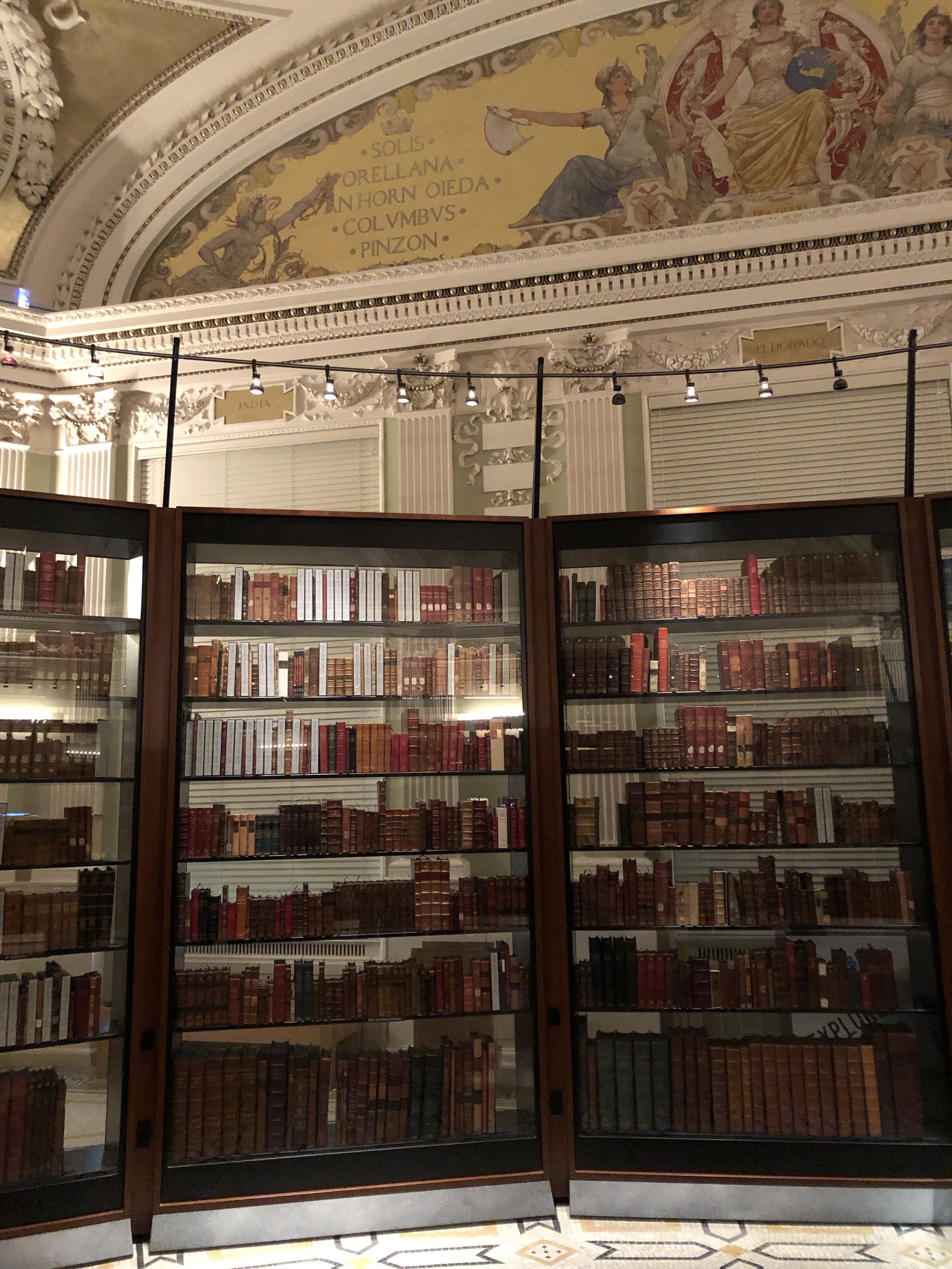
The library was chartered, I believe, in 1800, and was originally housed in the Capitol Building. During the war of 1812, the British burned the building and the library was lost. Thomas Jefferson offered to sell his substantial library to restart the library (he actually had more books at the time). The library burned again several years later, and this is a recreated version of his original library, with some replacements from other sources, and some books that have never been found again.

Books that were part of TJ’s original collection have a green ribbon. Imagine holding a book that was once held by a founding father… amazing!
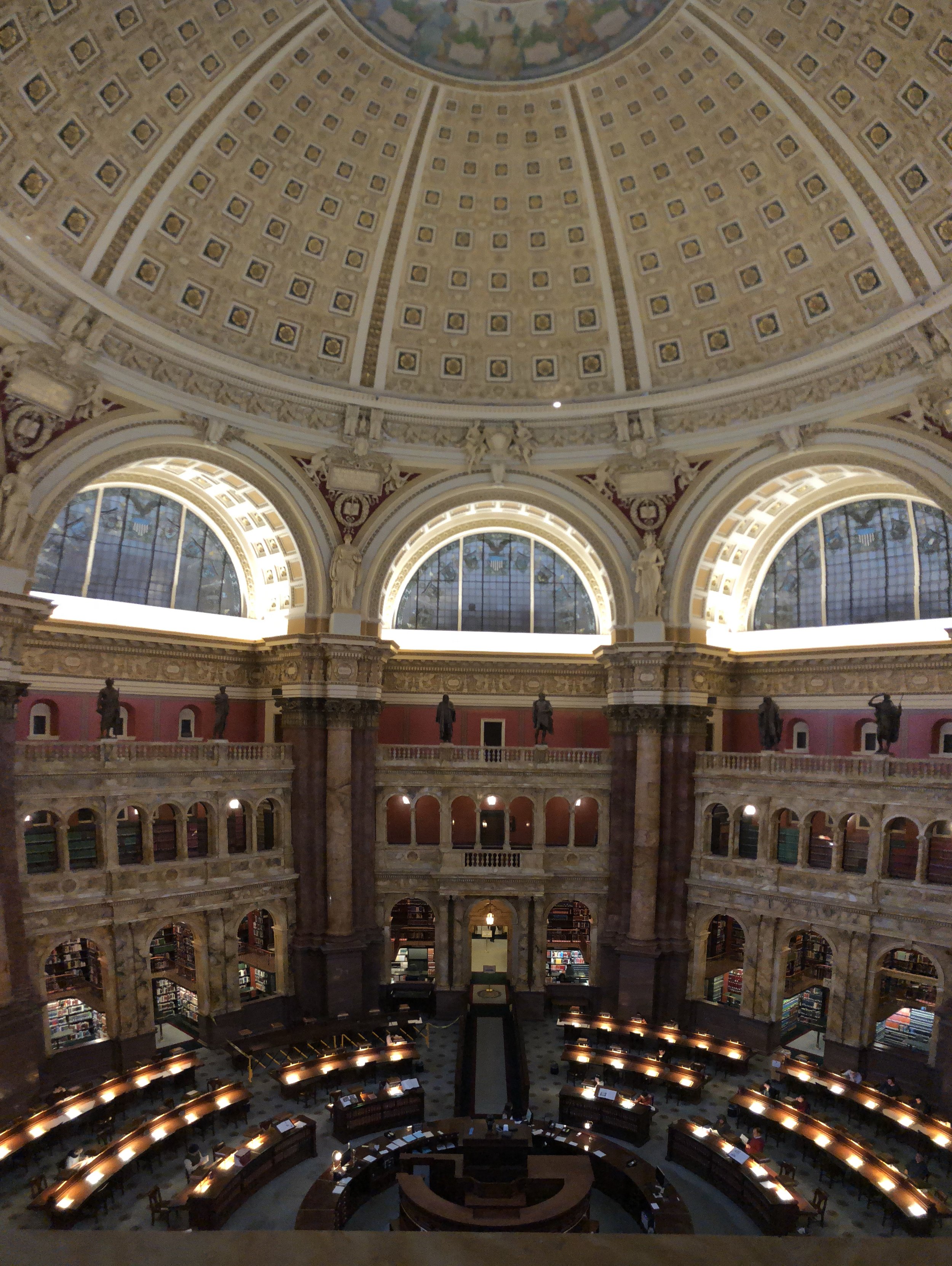
This is such an amazing space. This is the viewing balcony off of the main hall. The statues and frescos are all stunning and full of meaning.
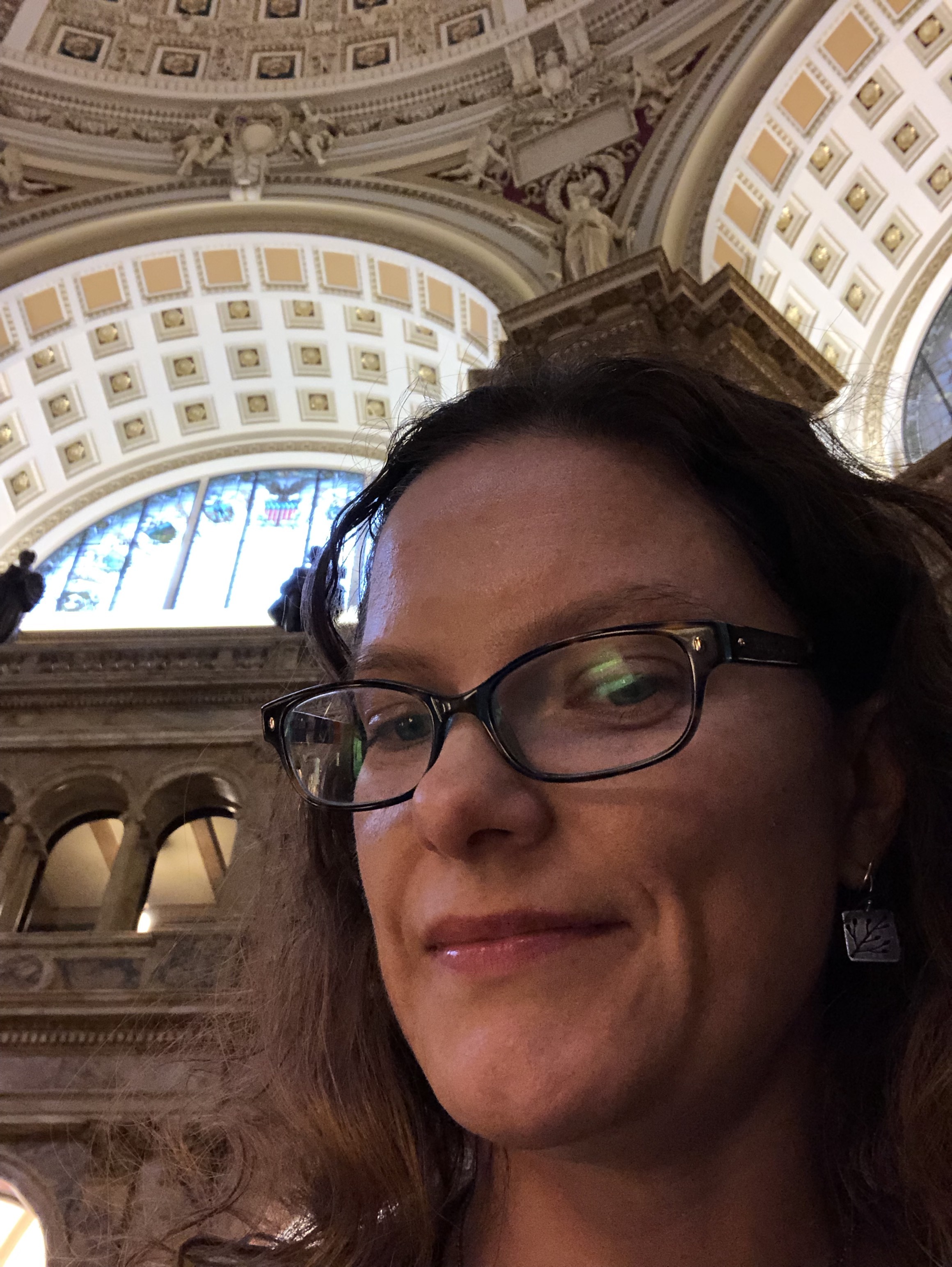
If you have a library card, you can go into the main reading room. You’re not supposed to take pictures, but I couldn’t resist taking this quick photo. The room is just awe-inspiring to sit in. I can’t wait to come and actually work in this space soon.




